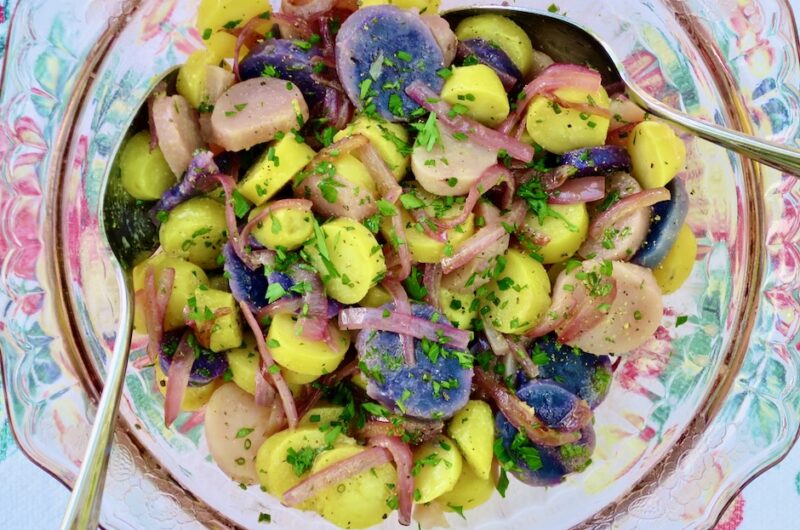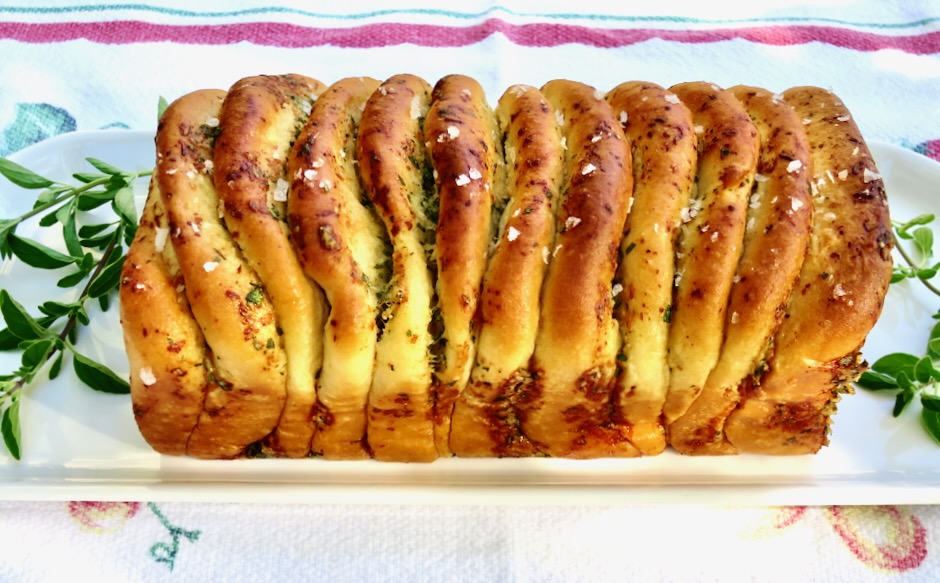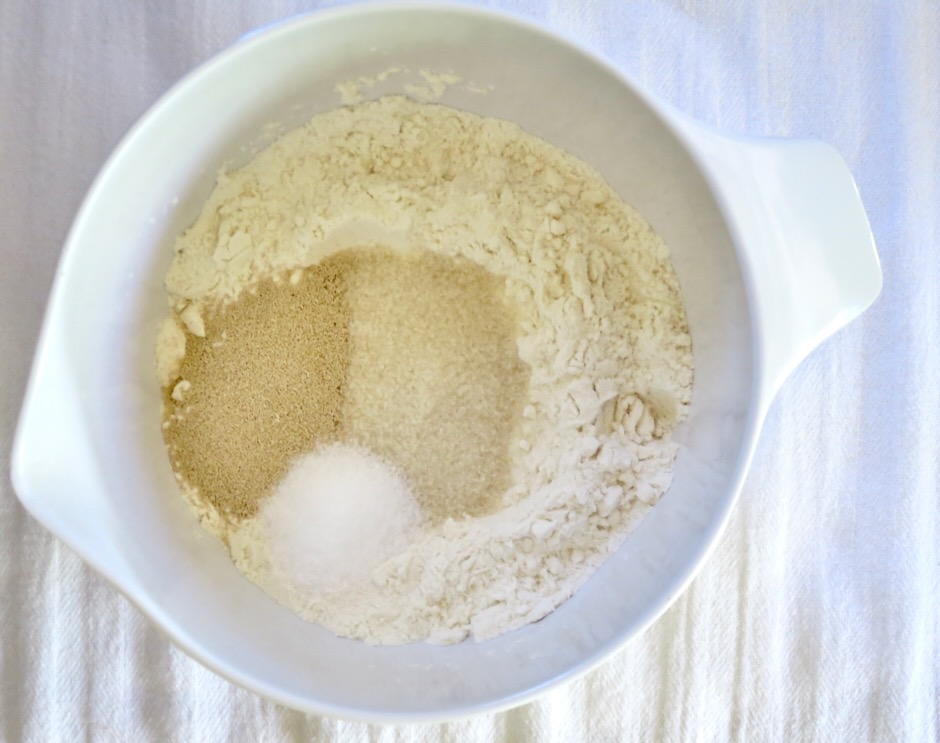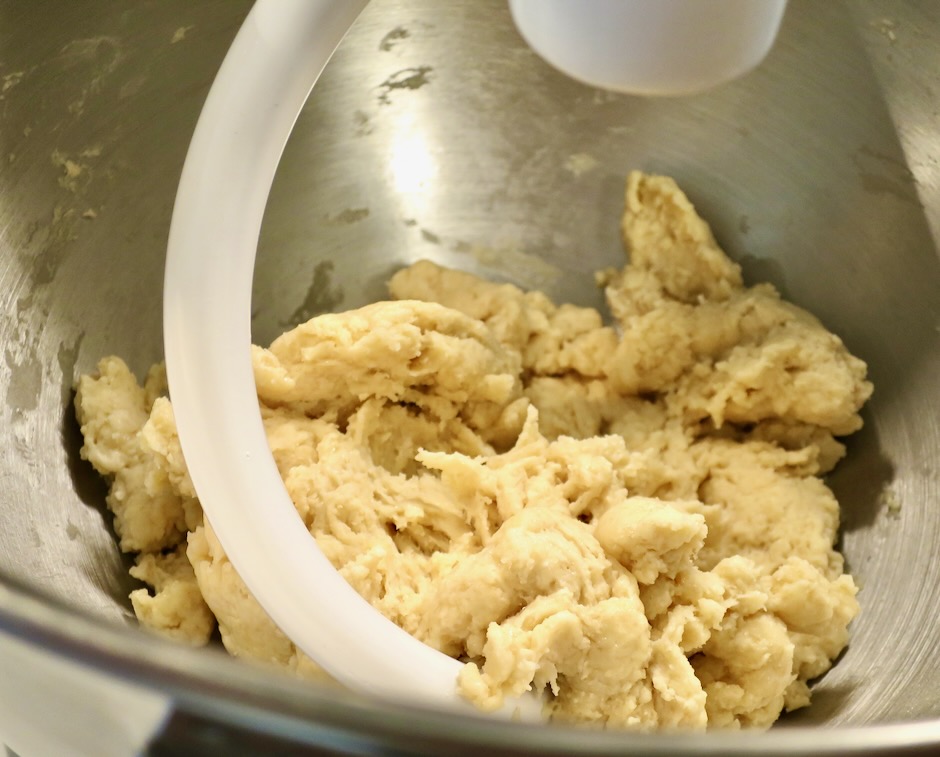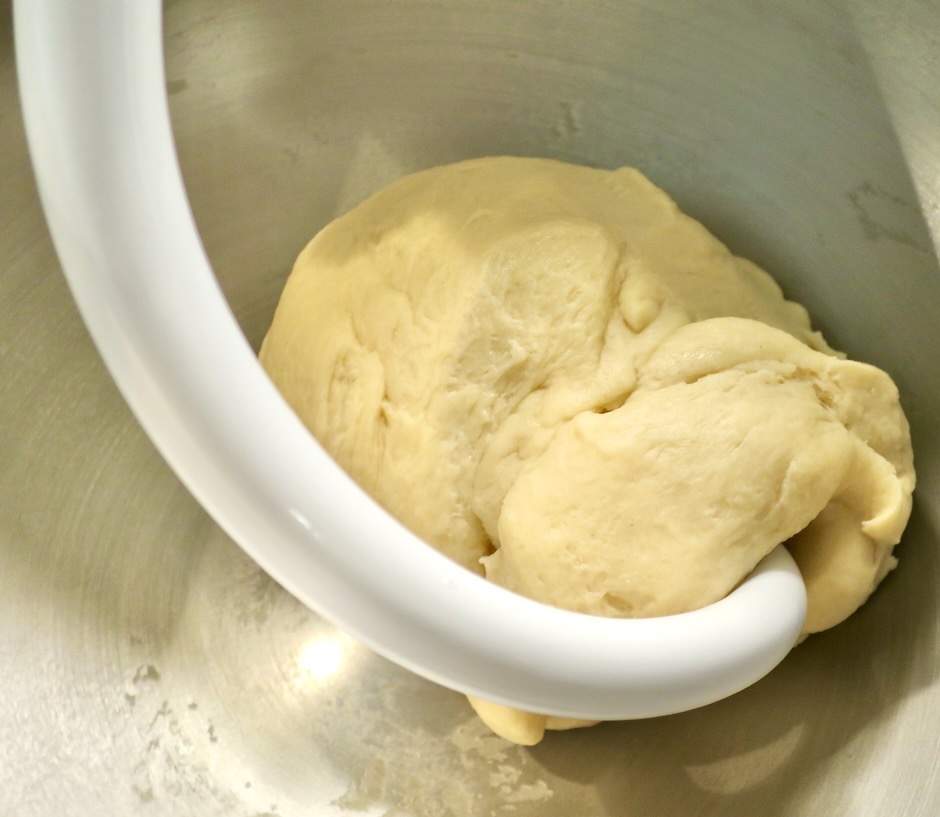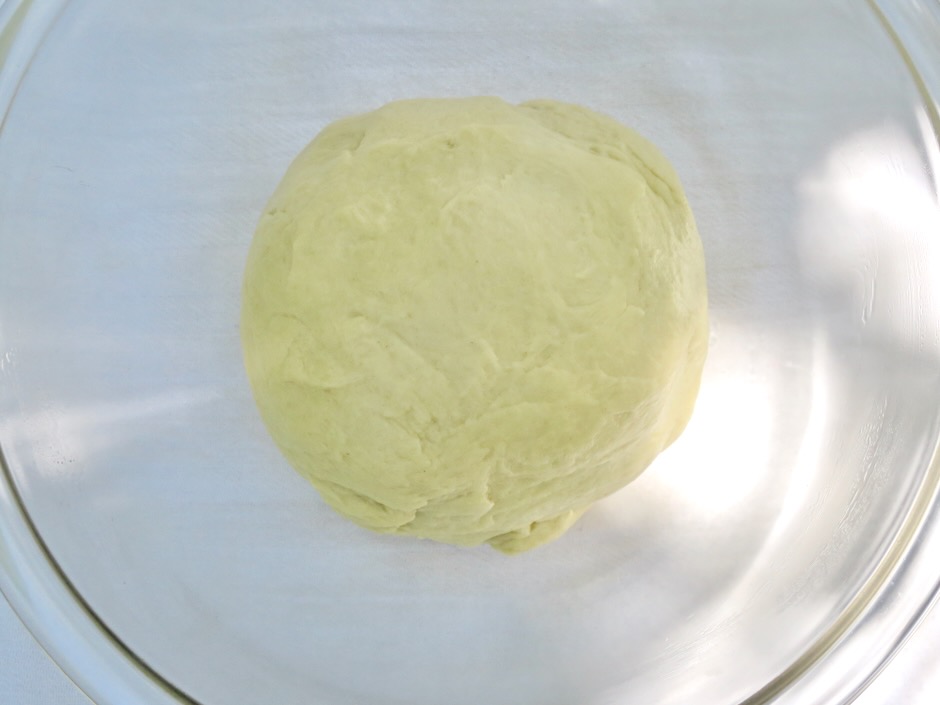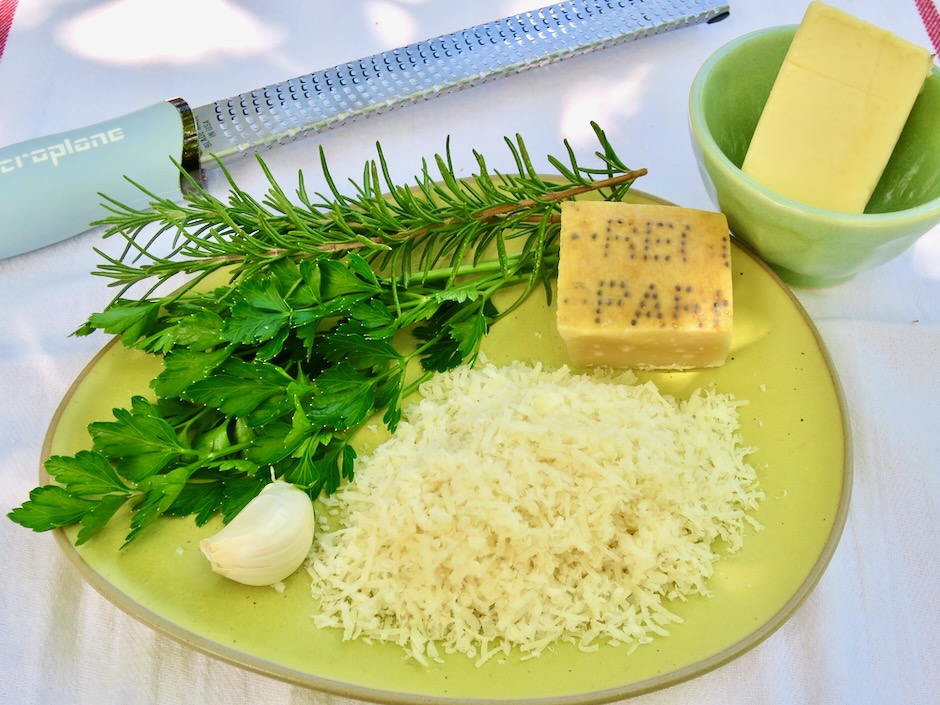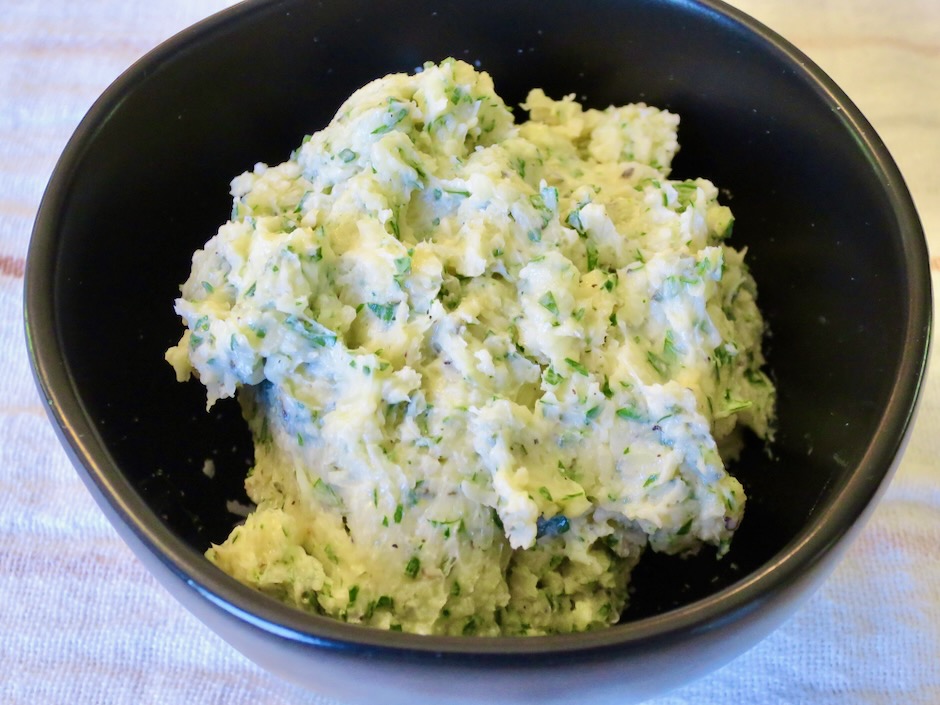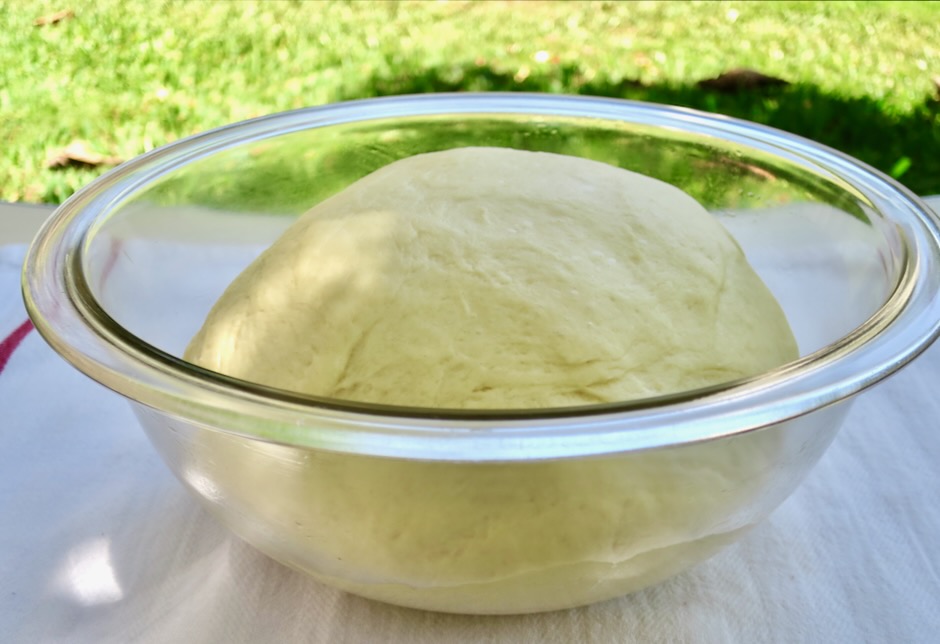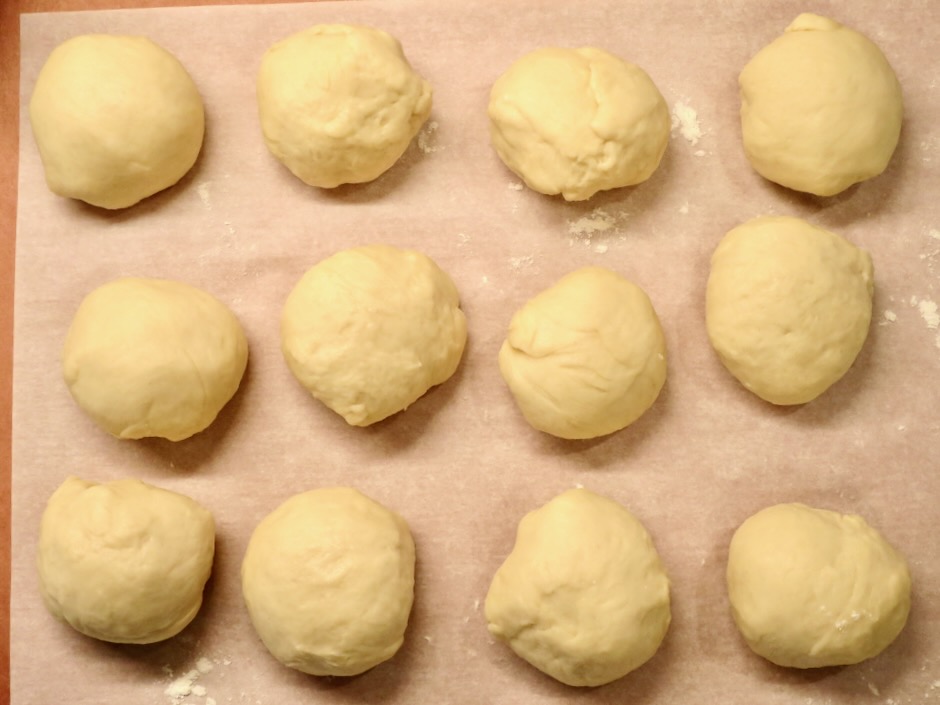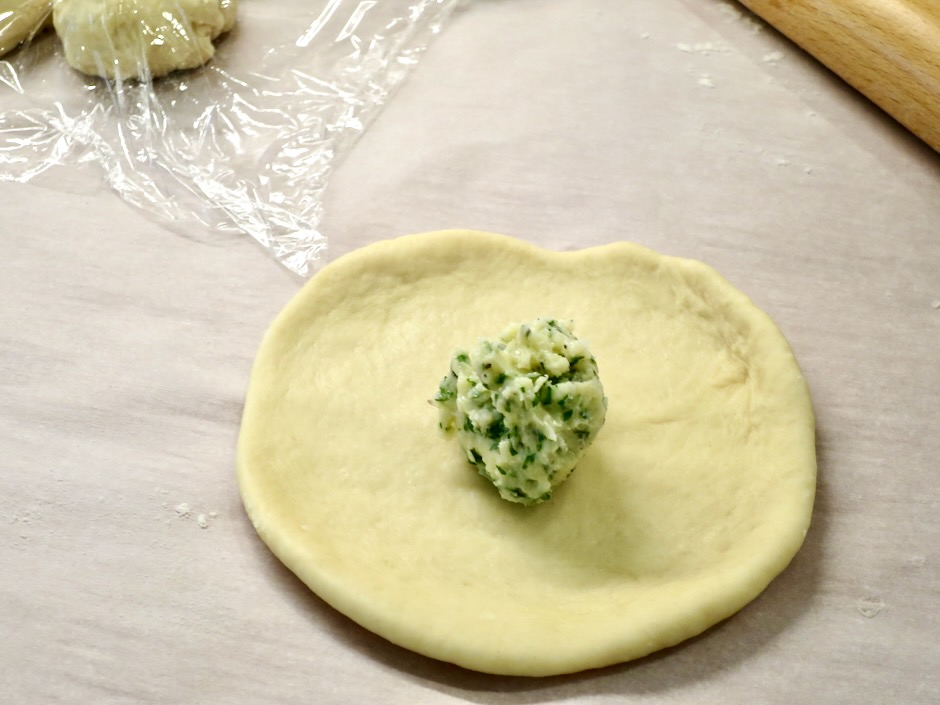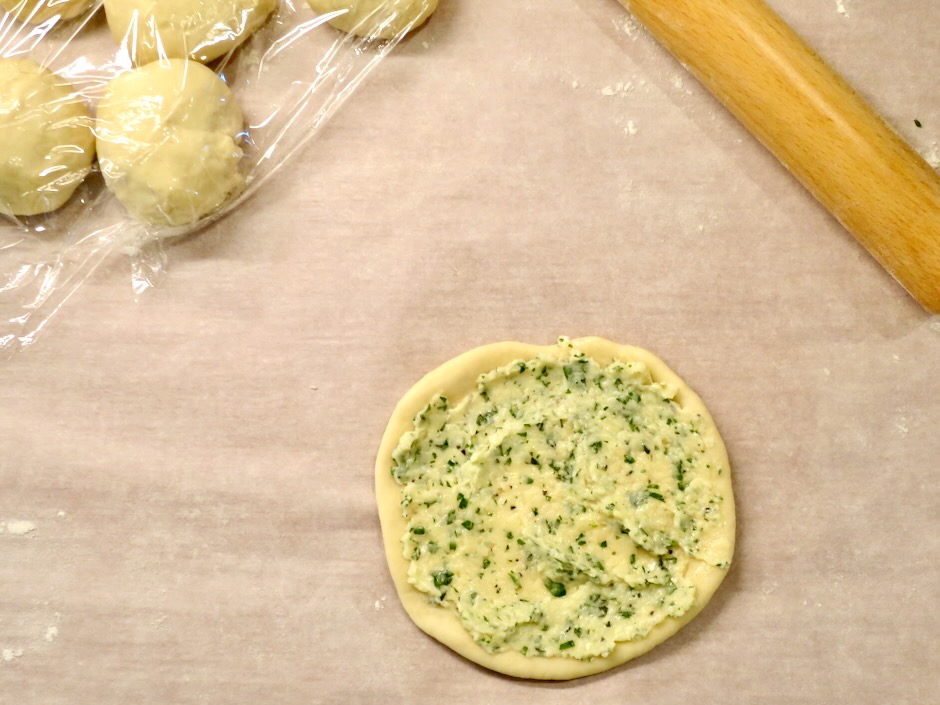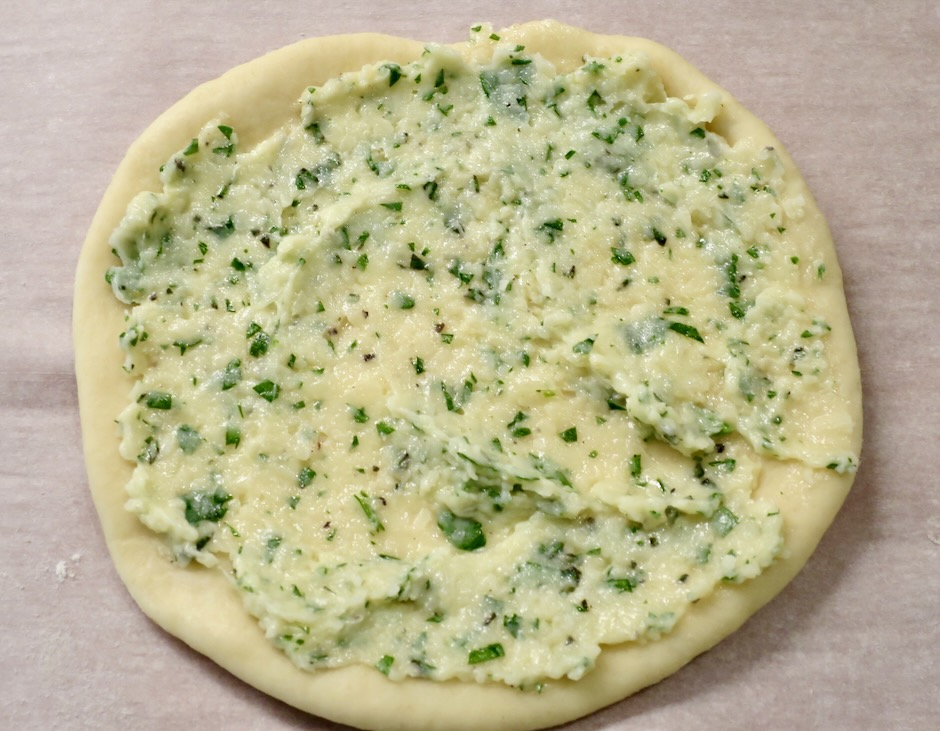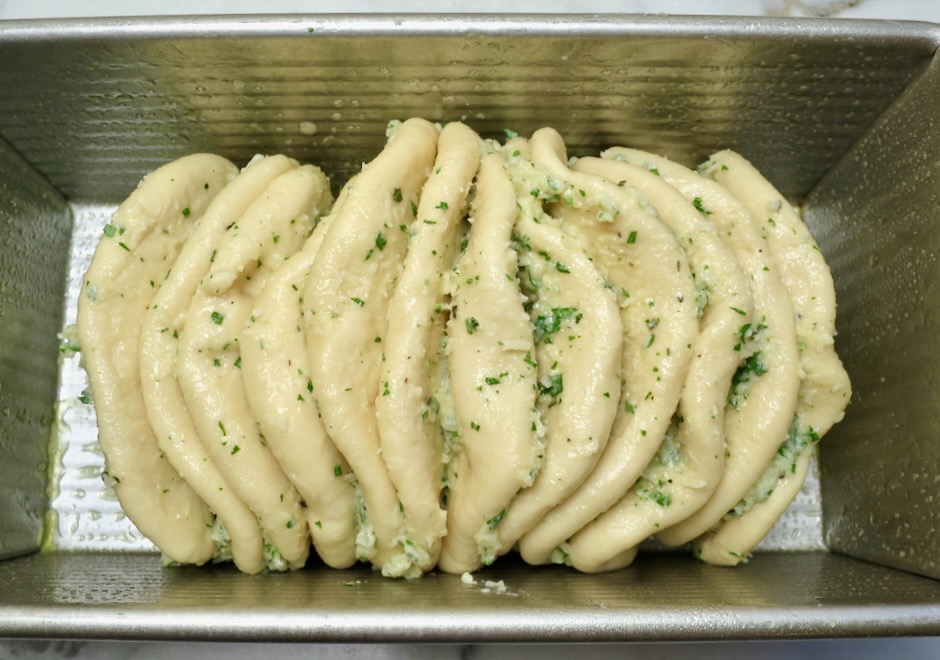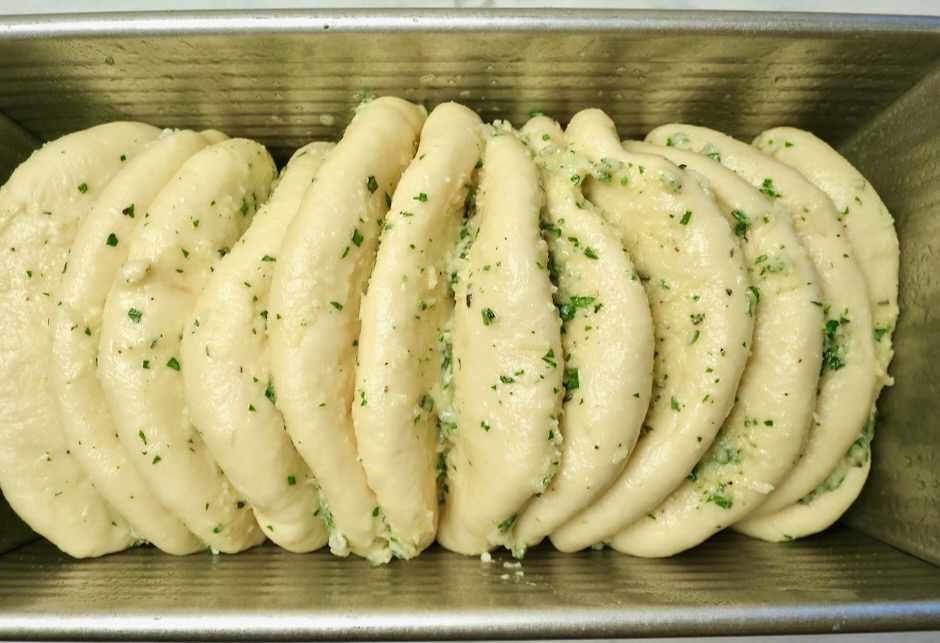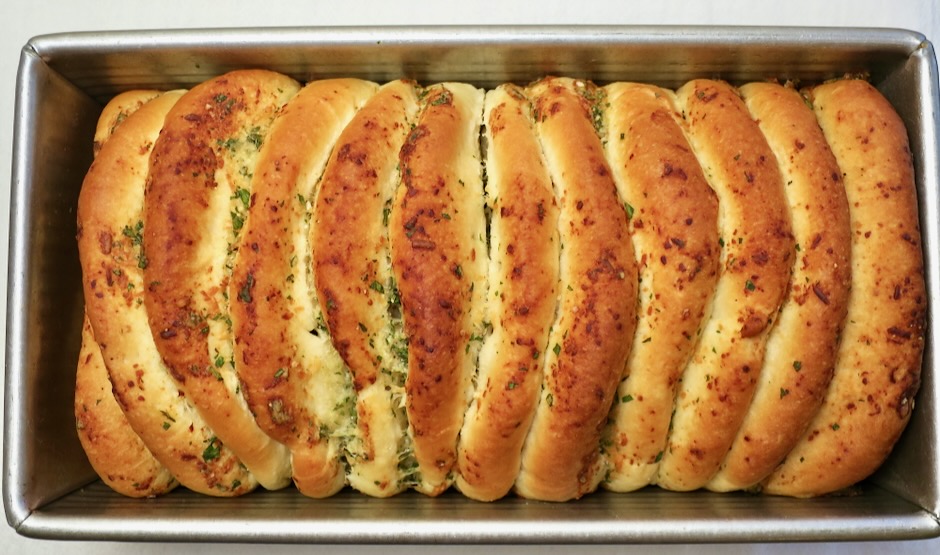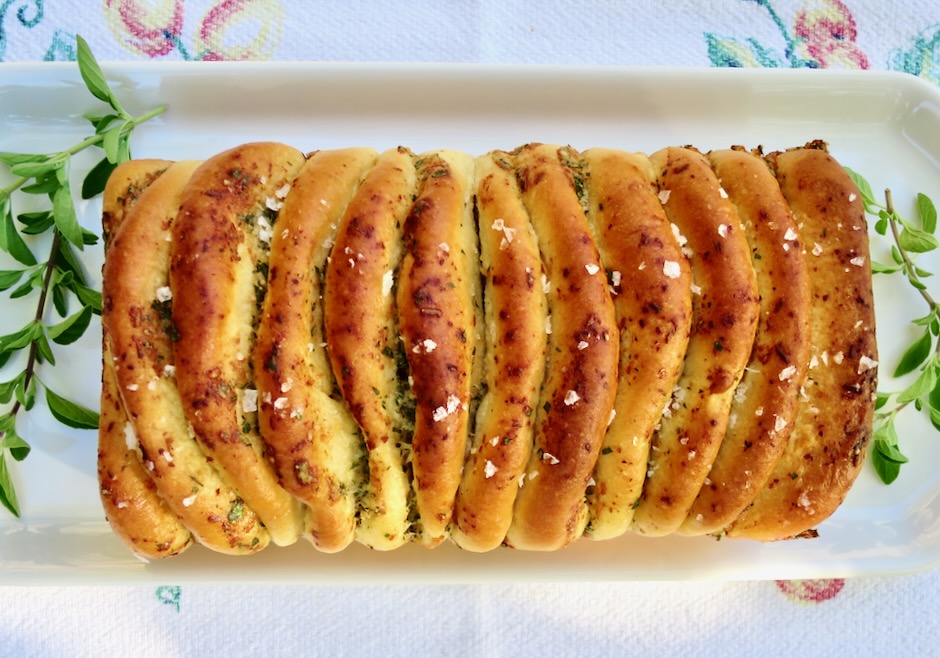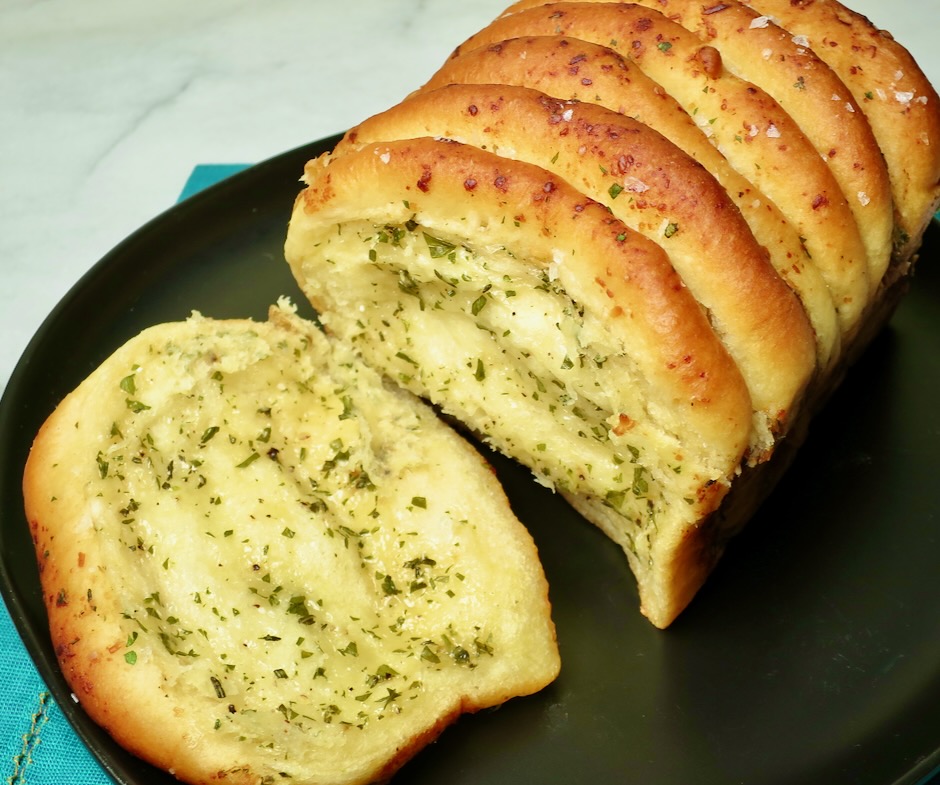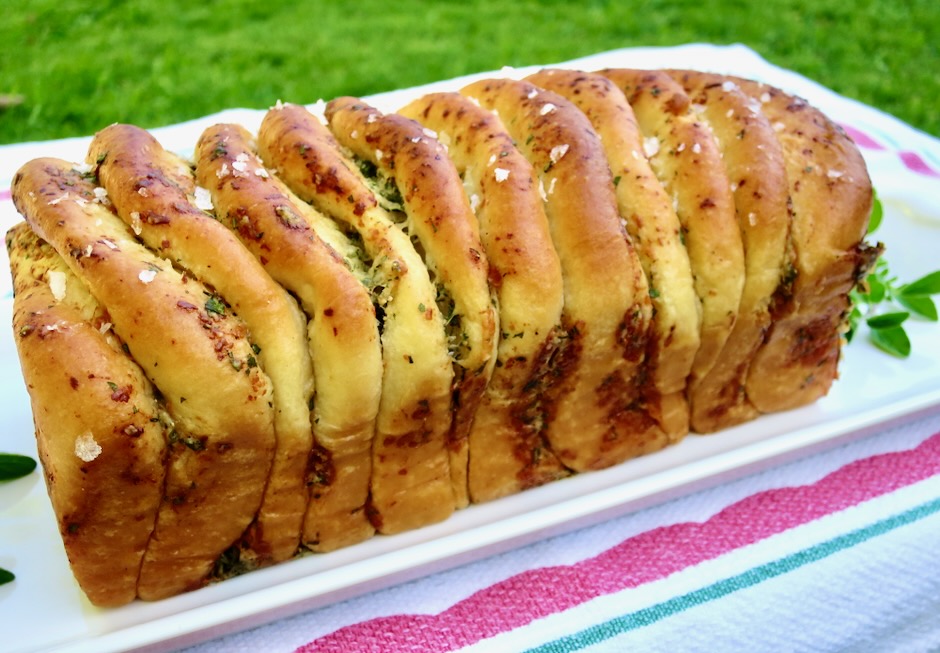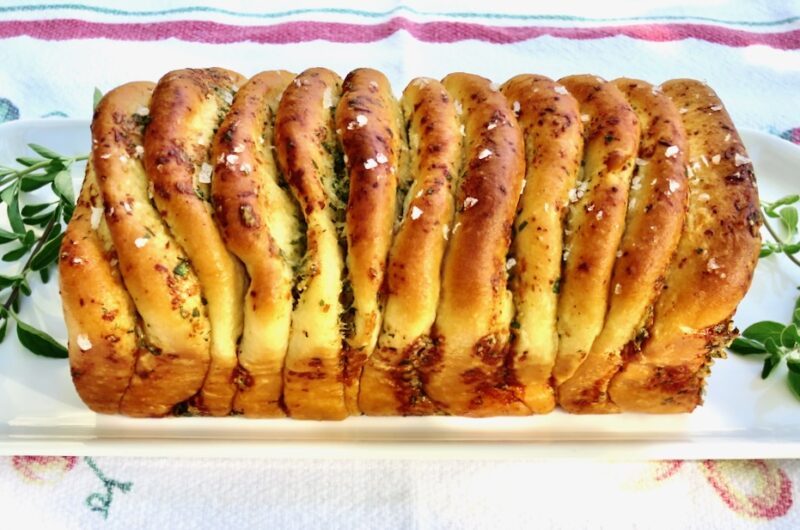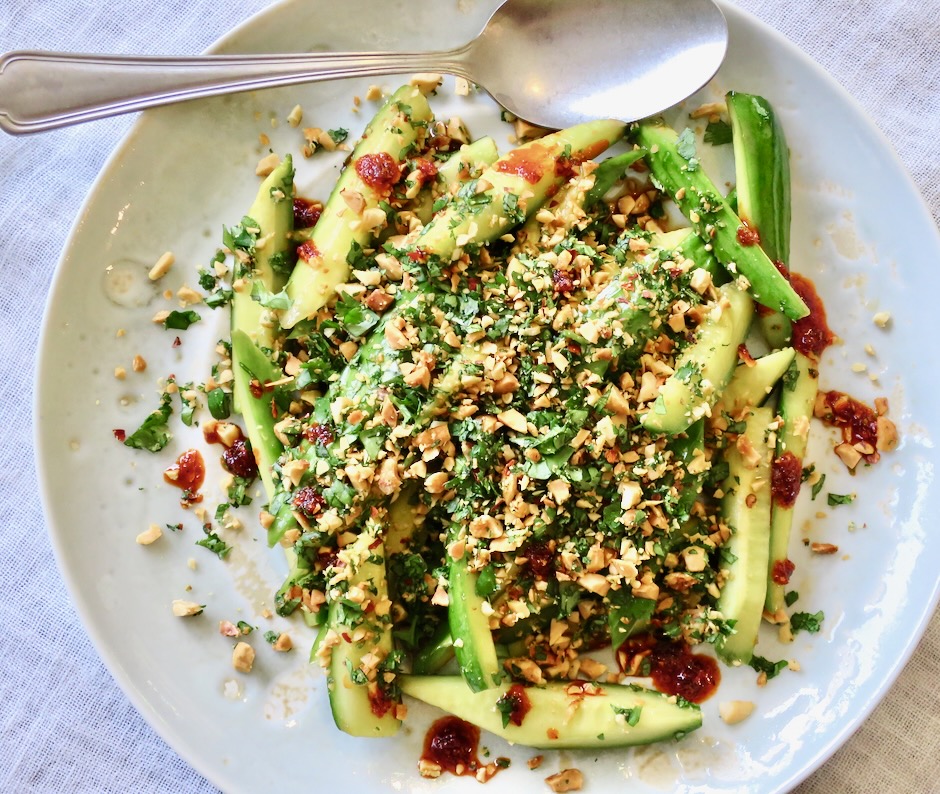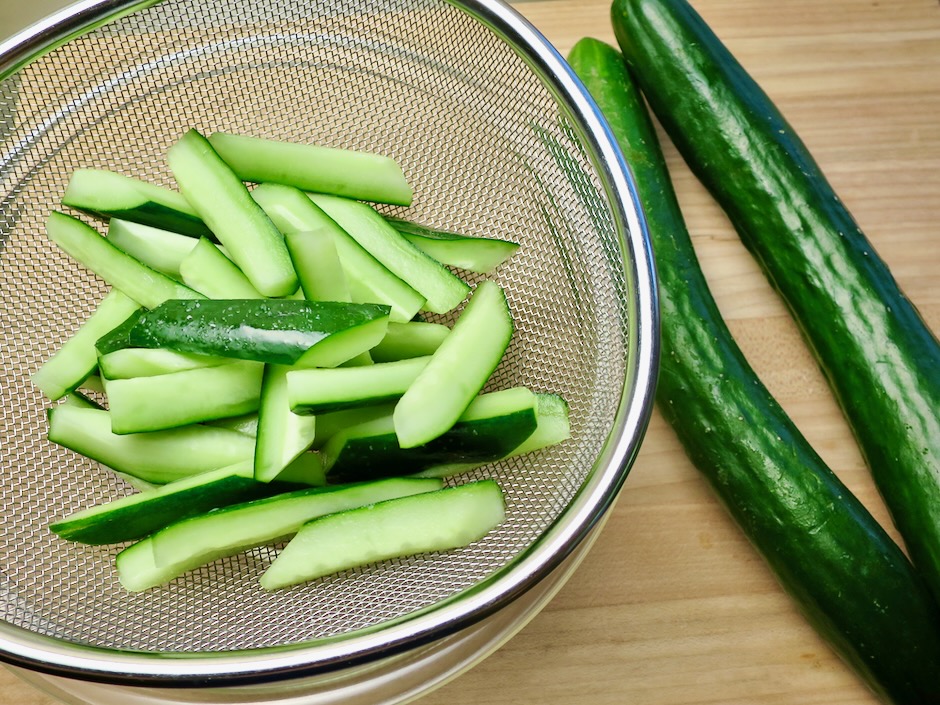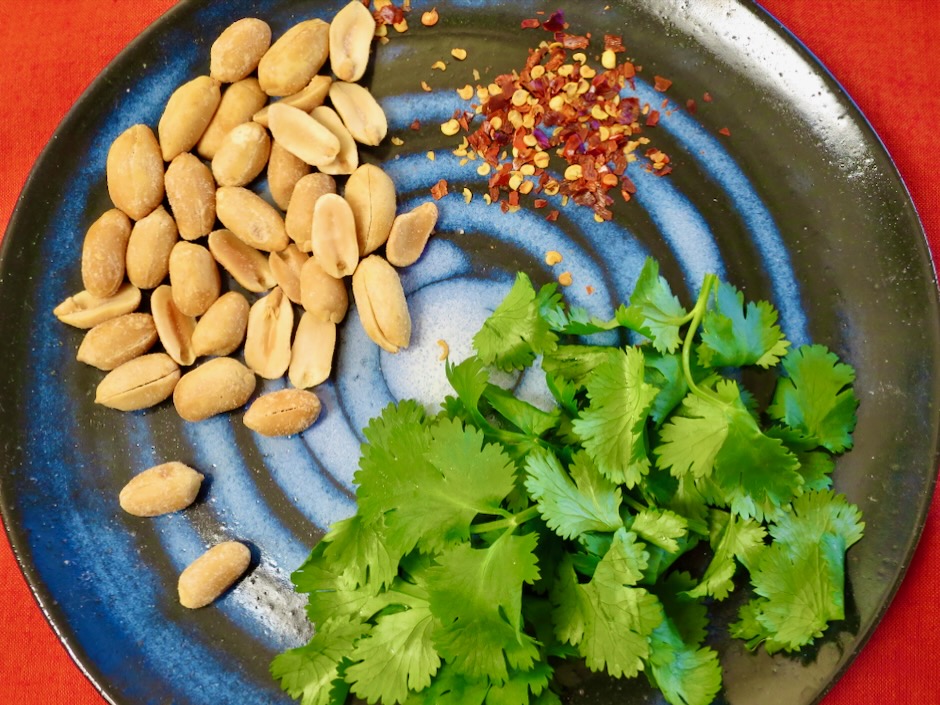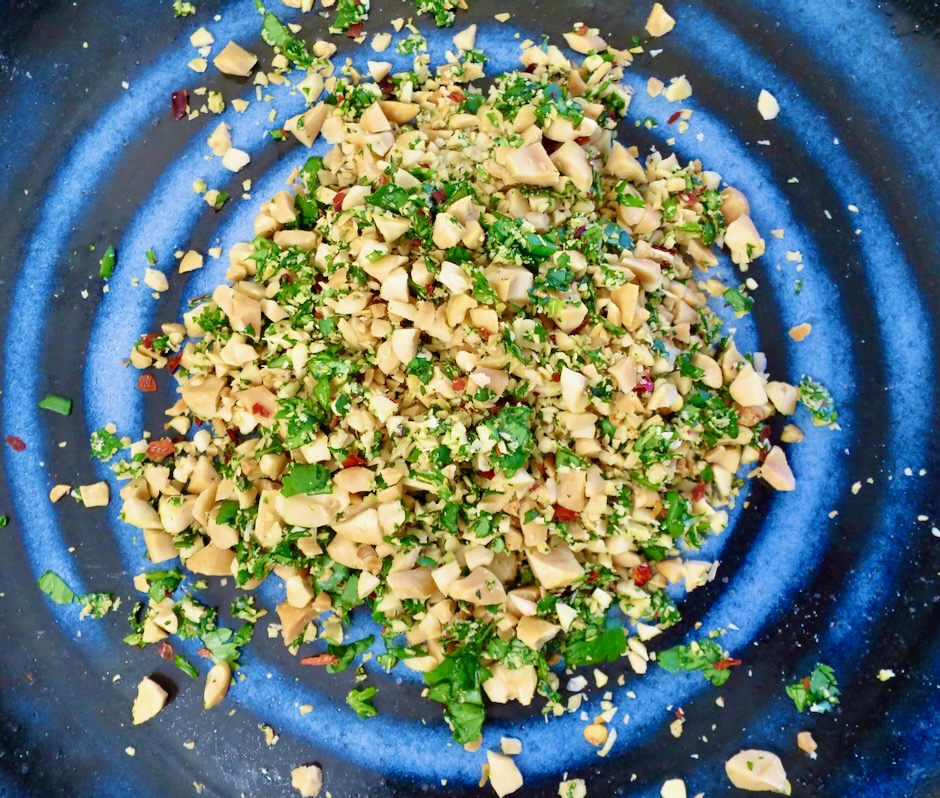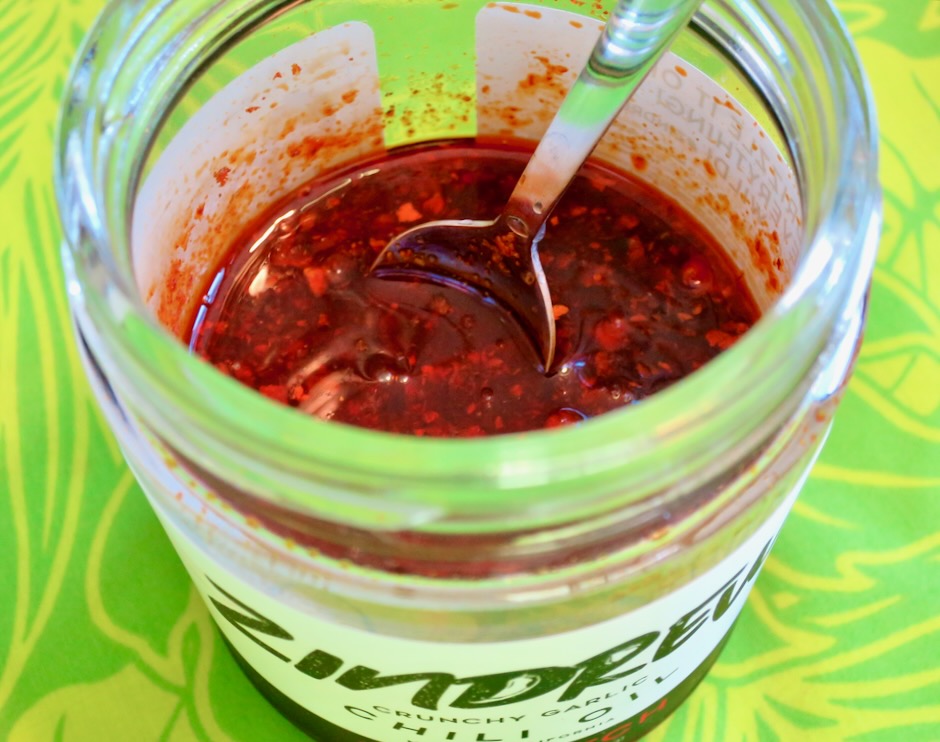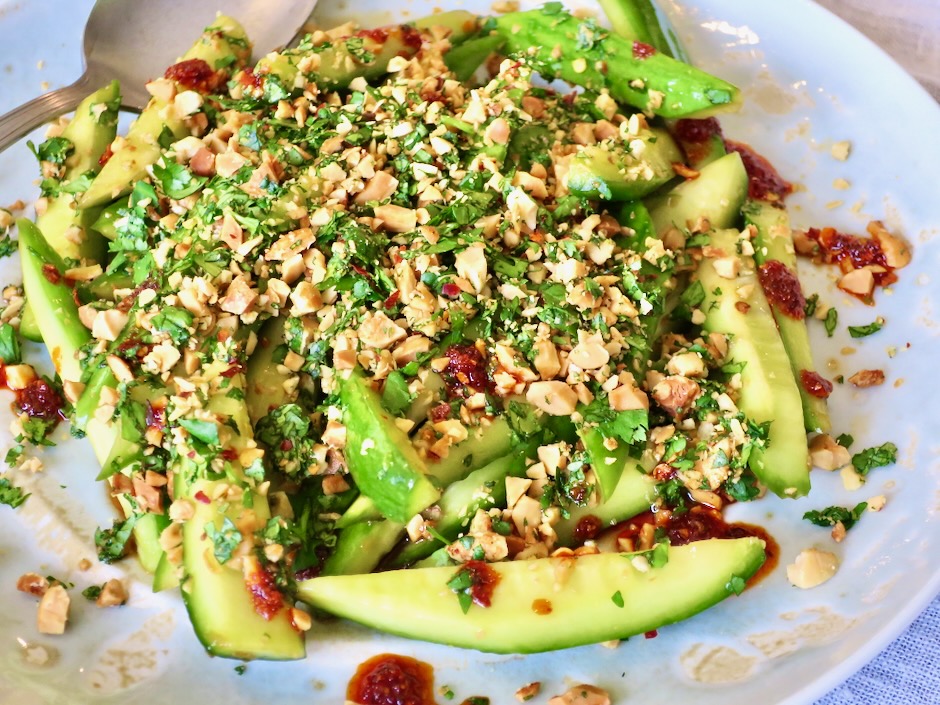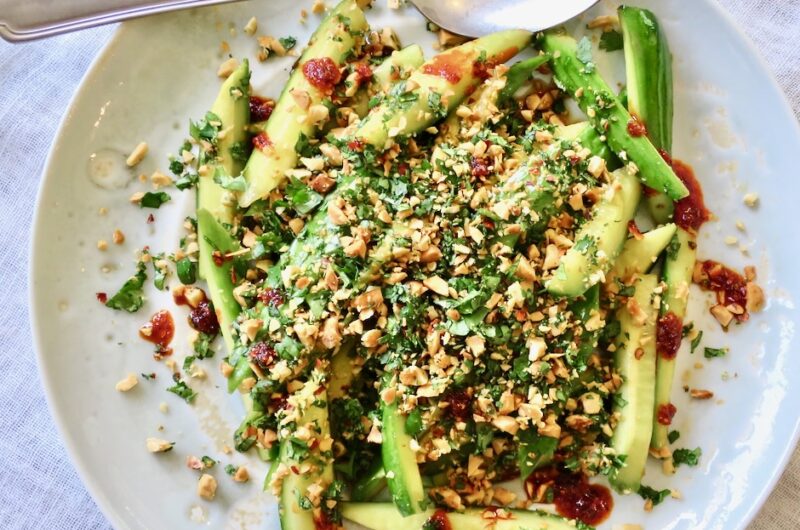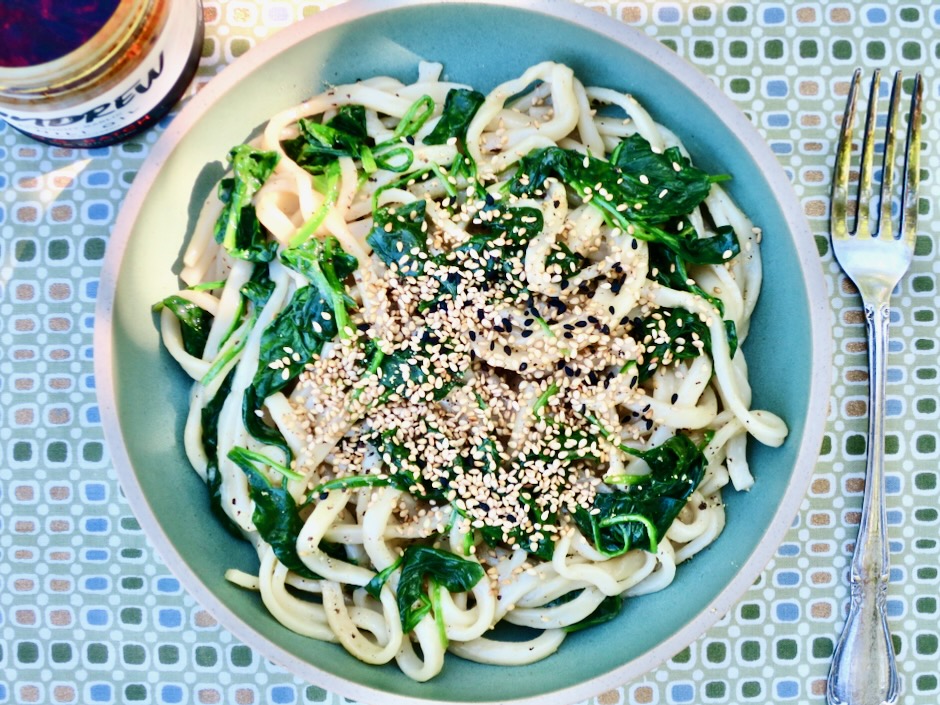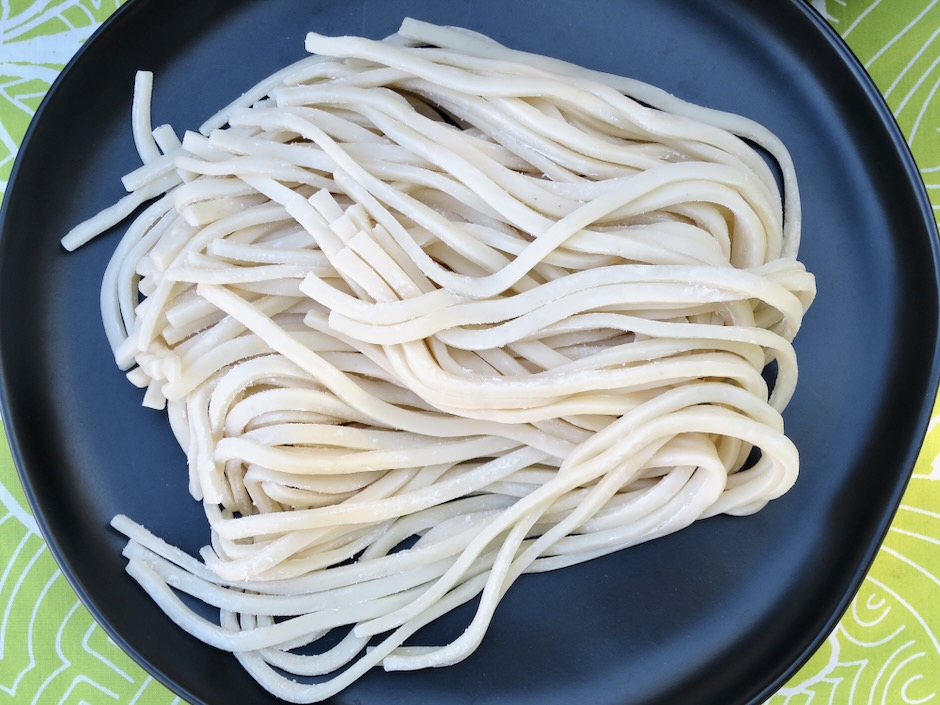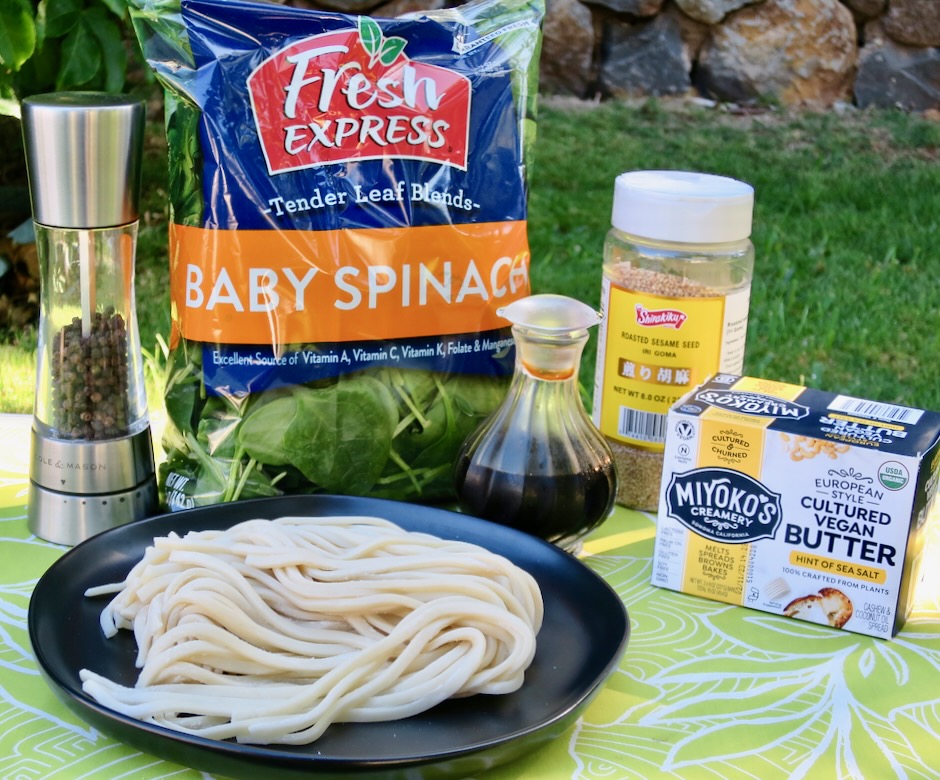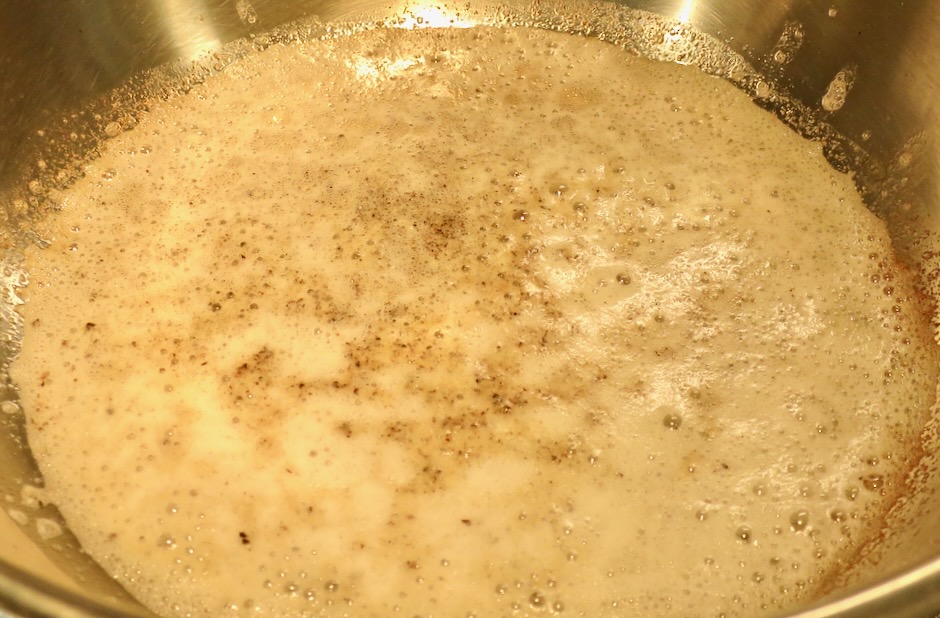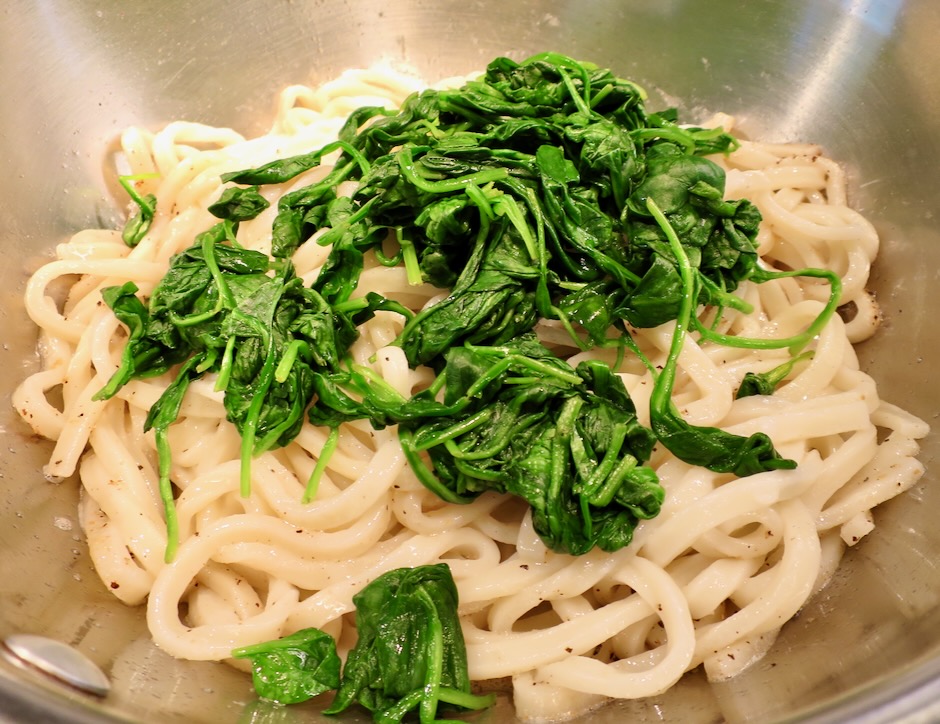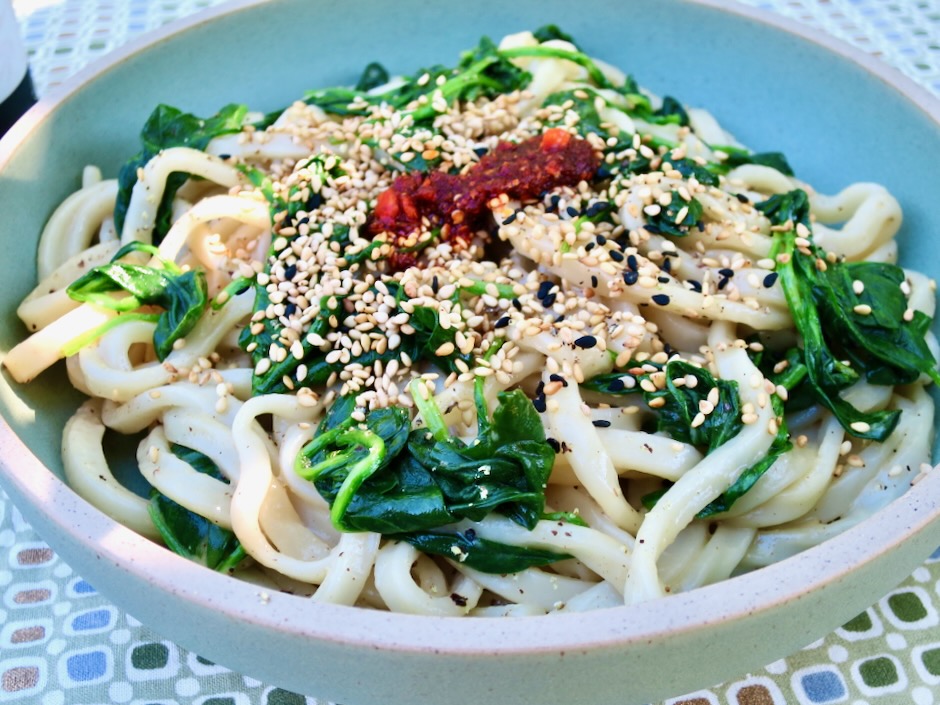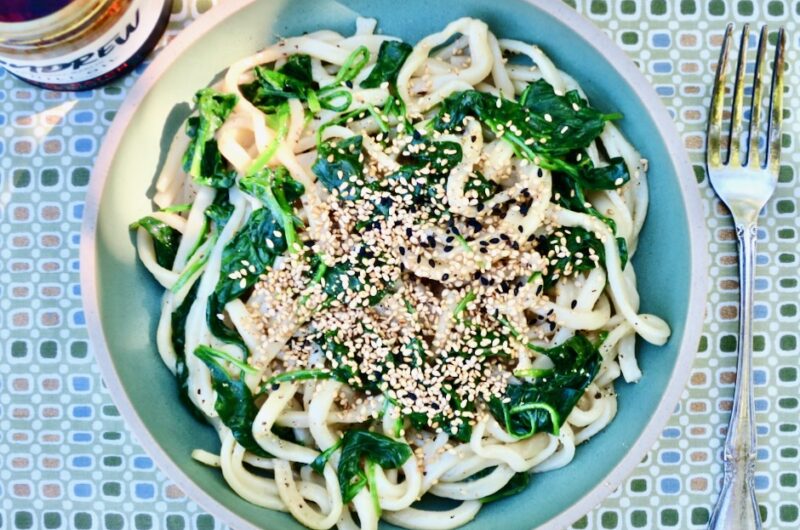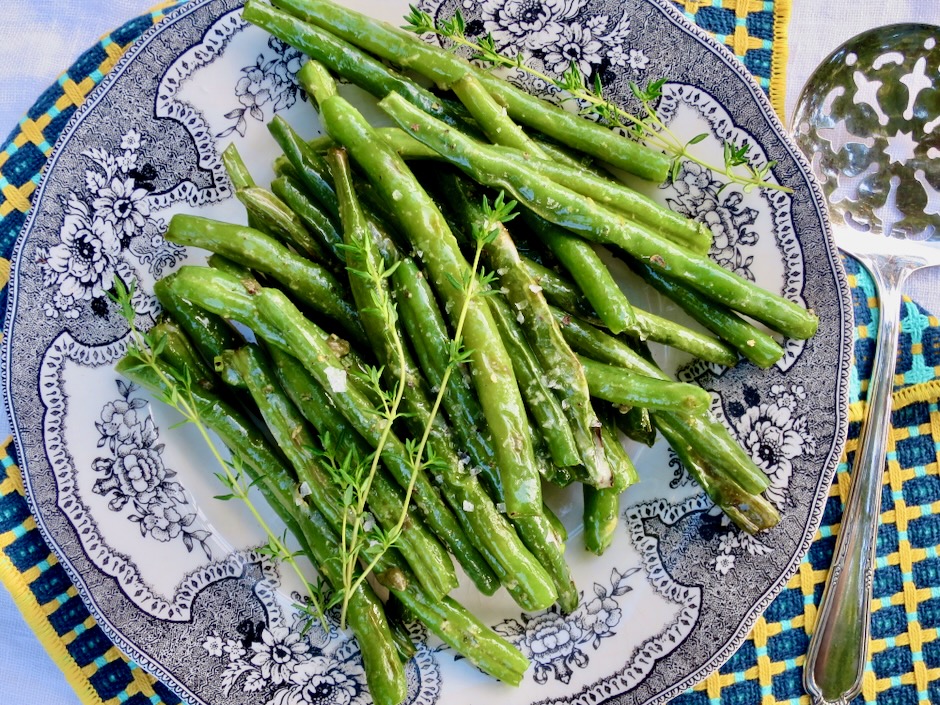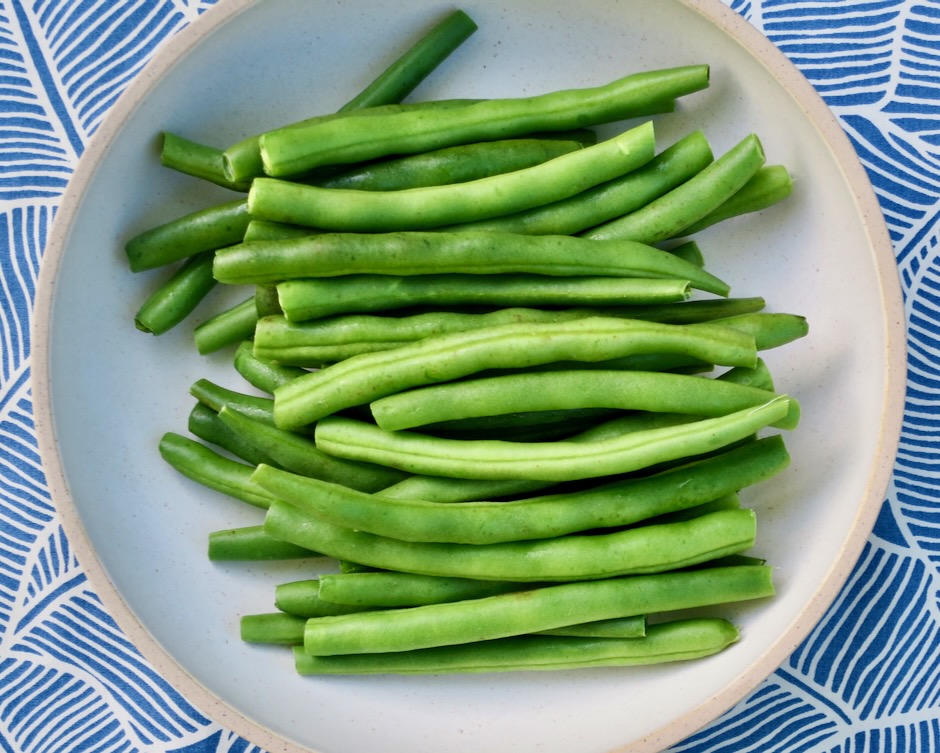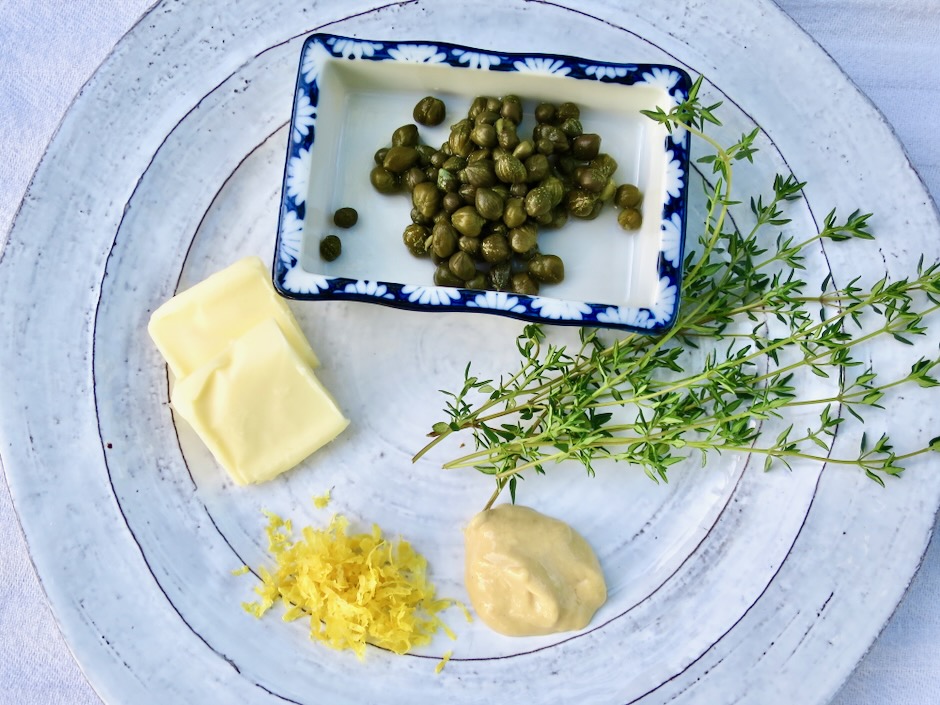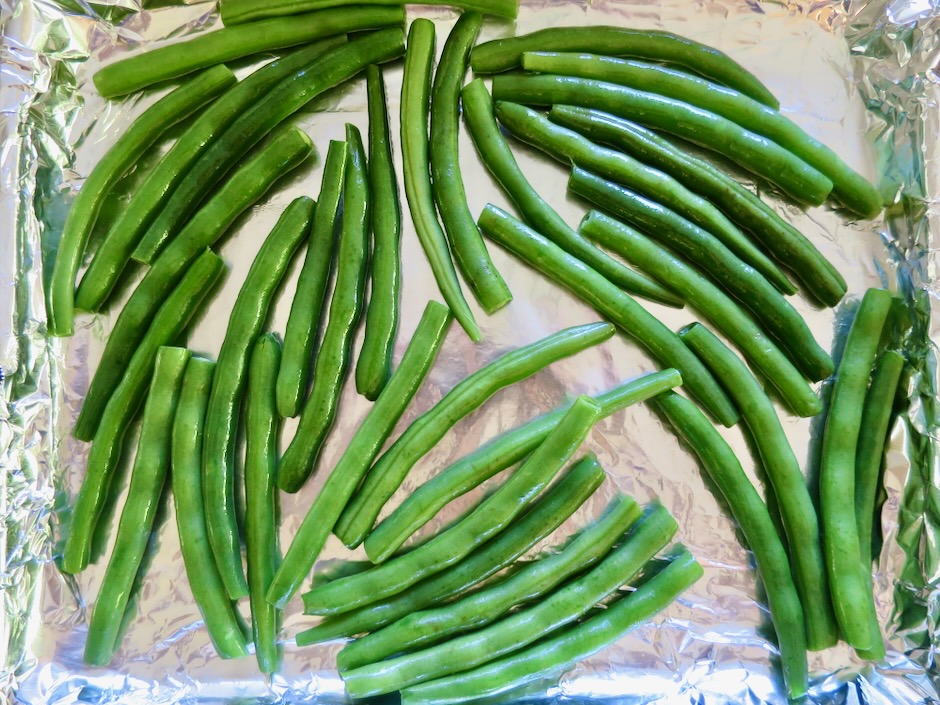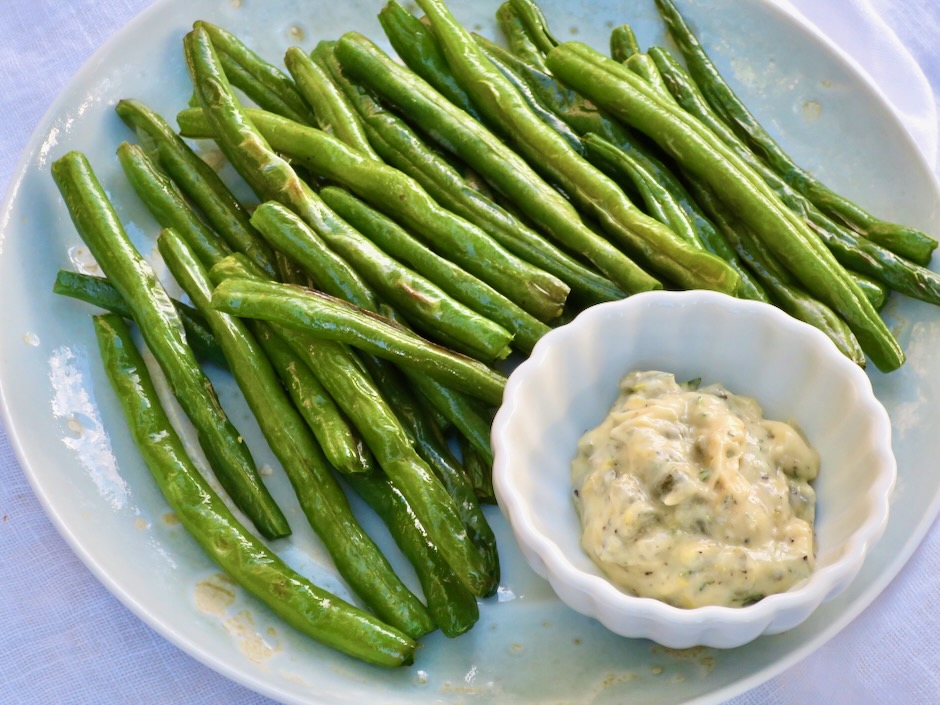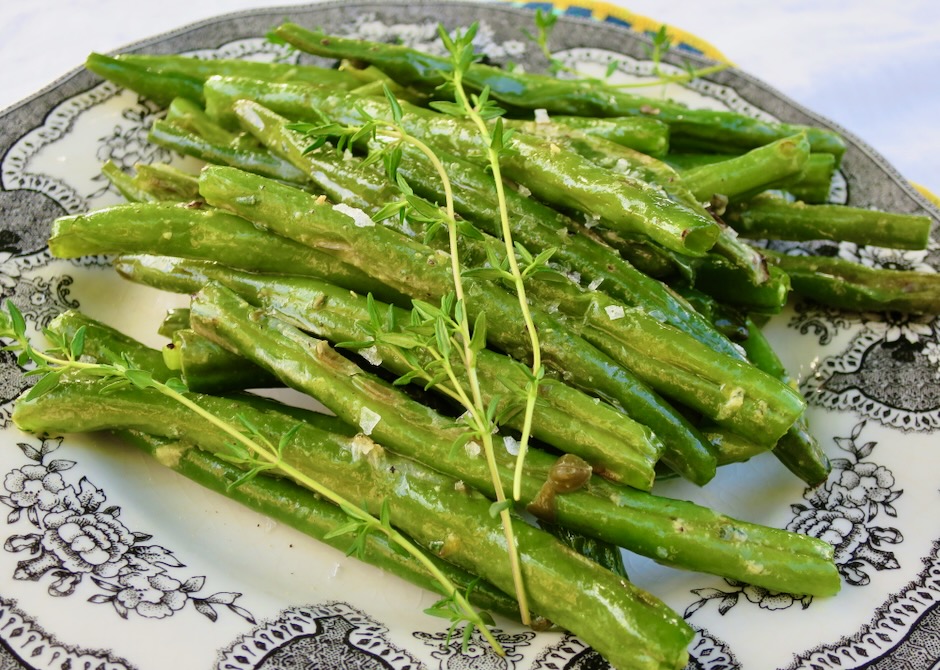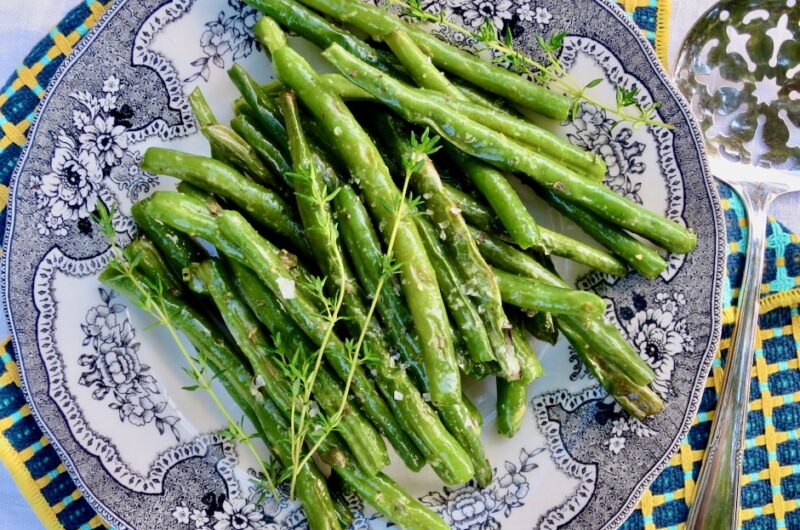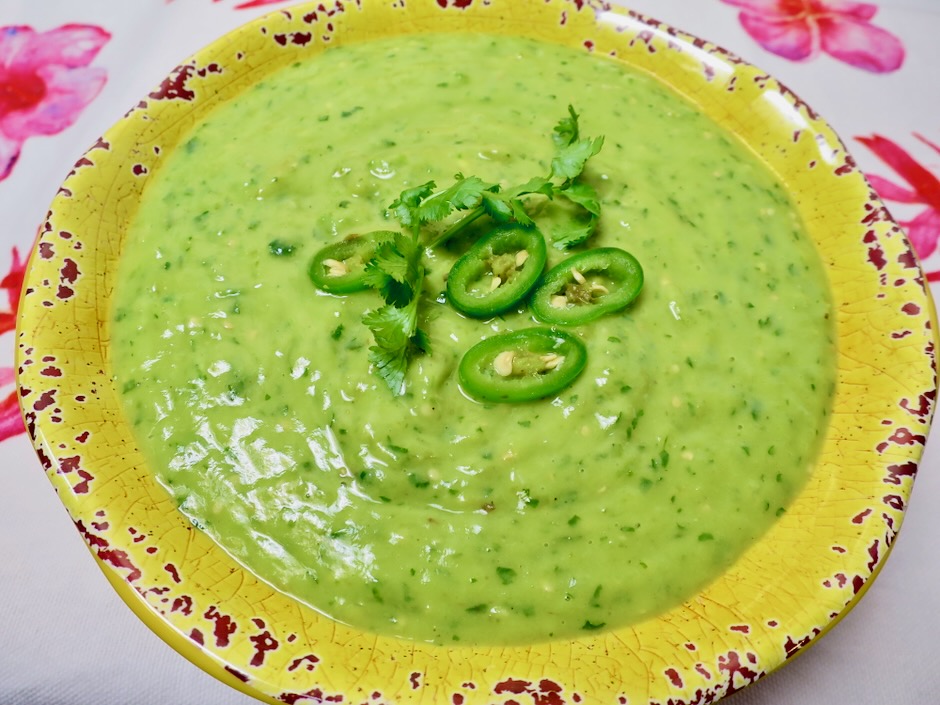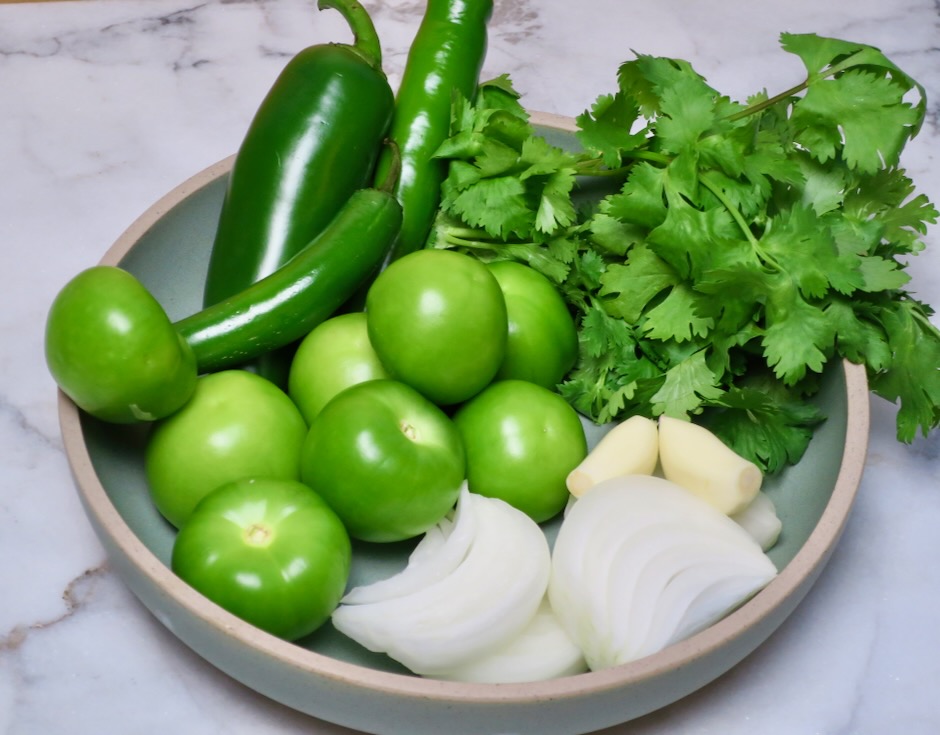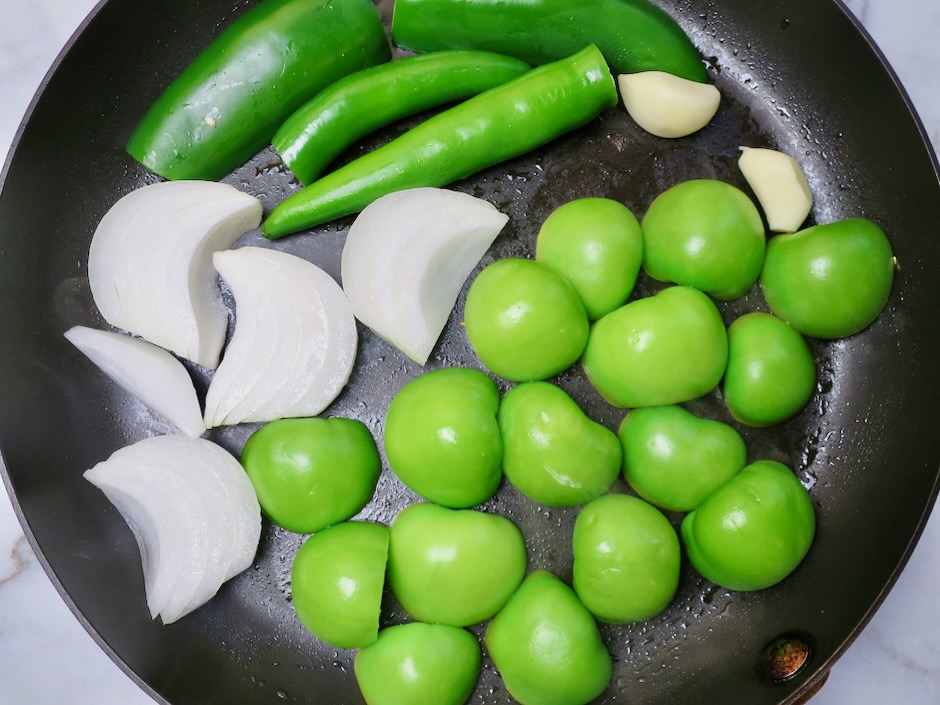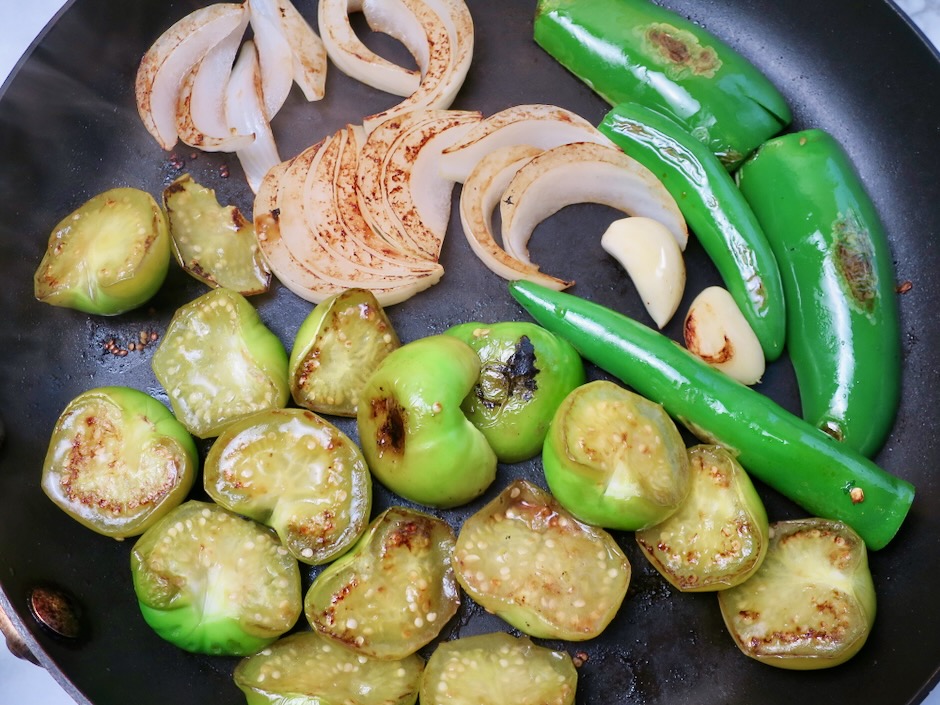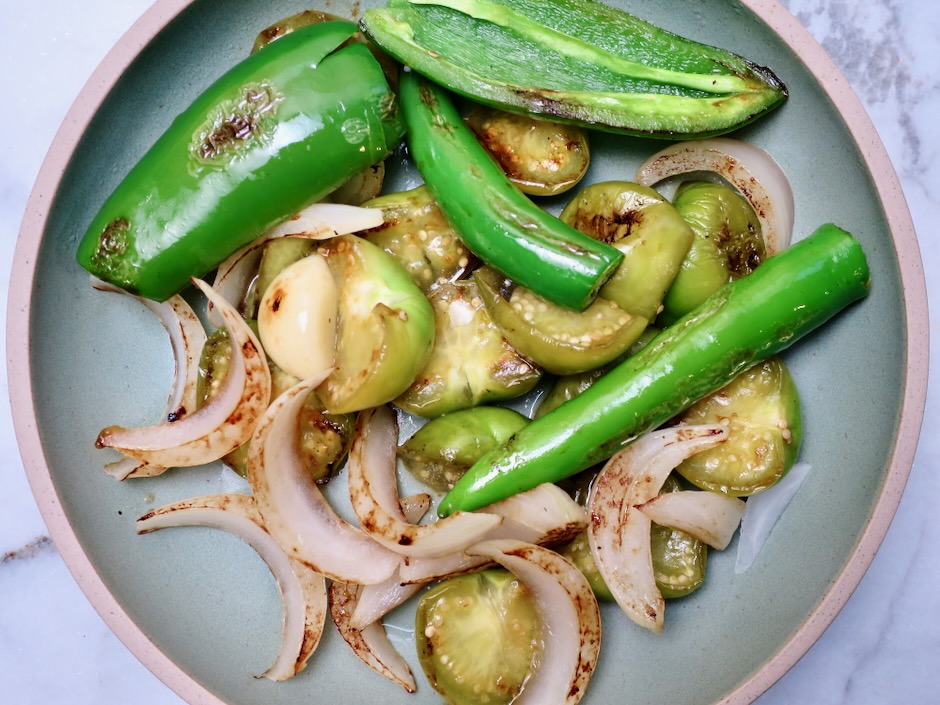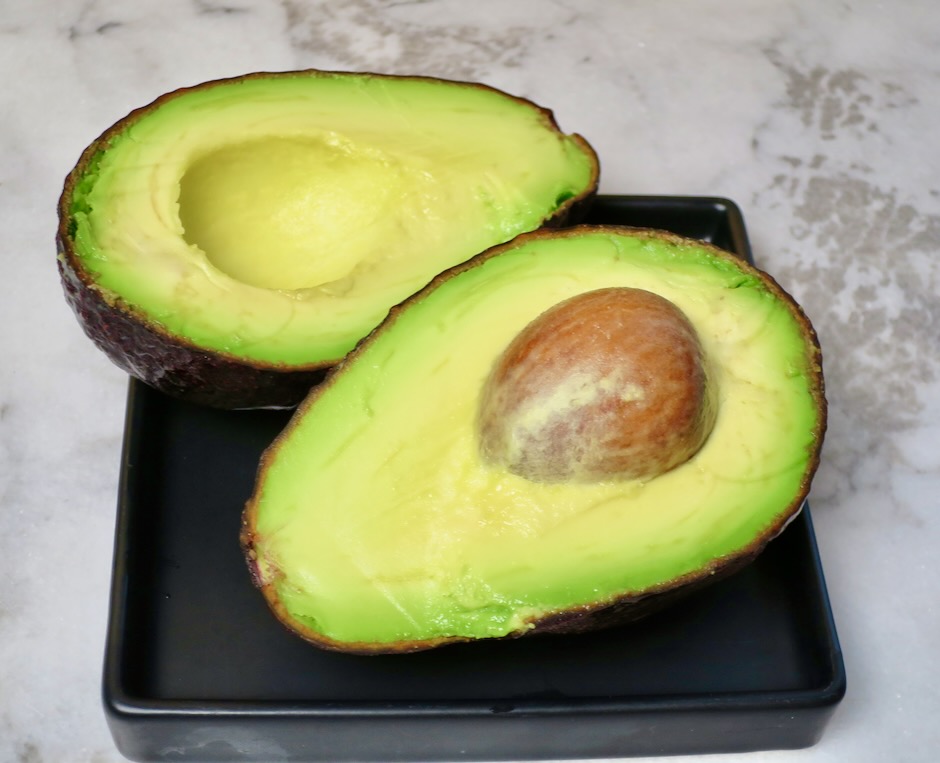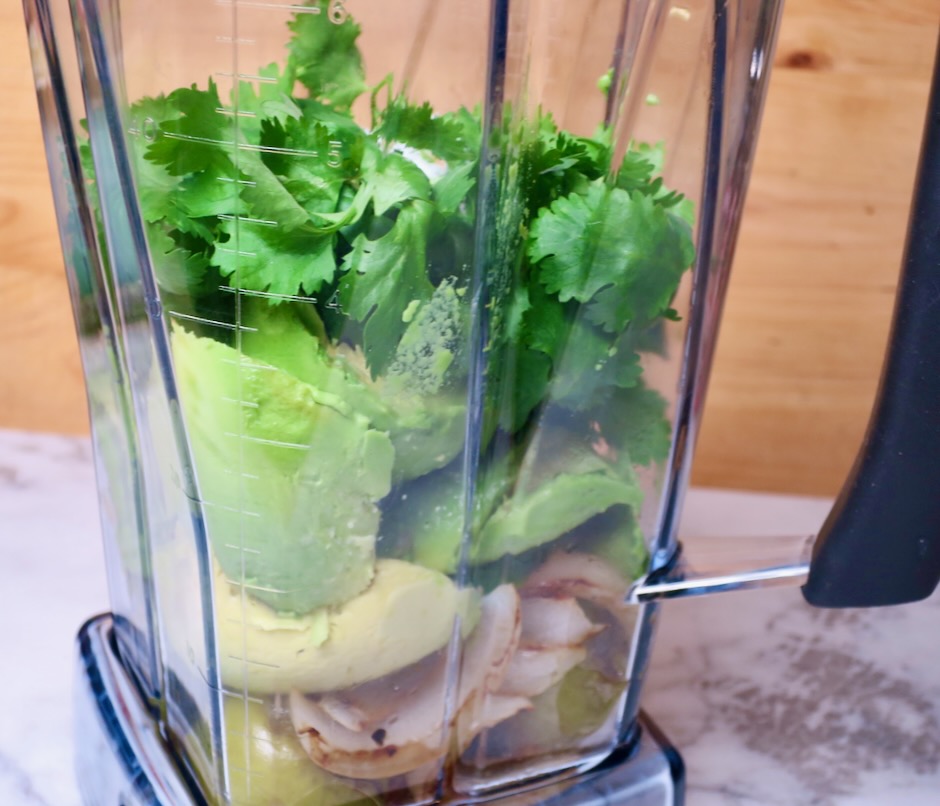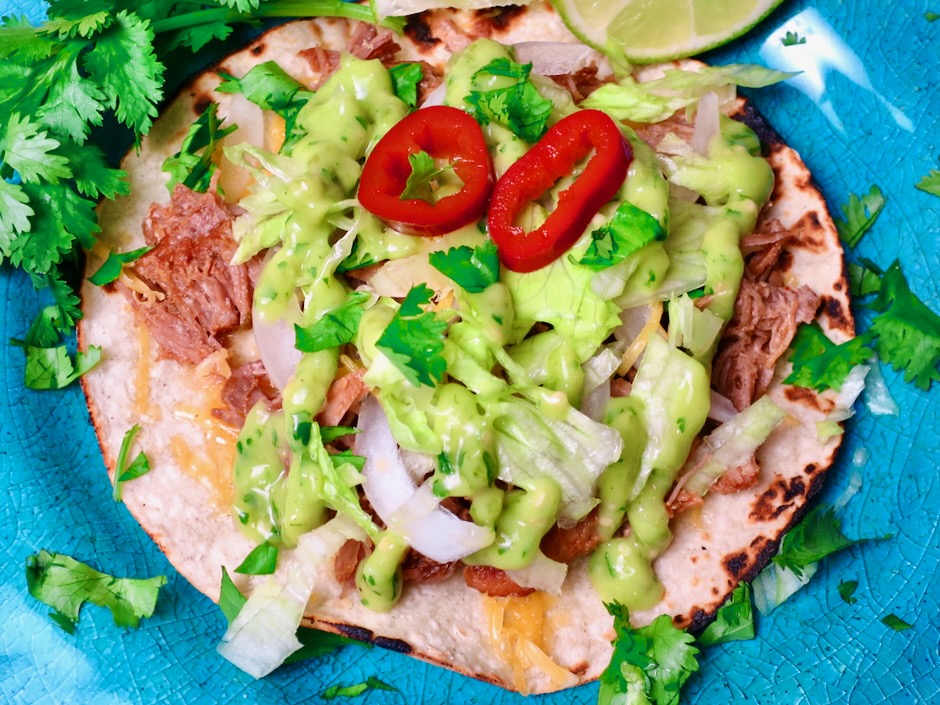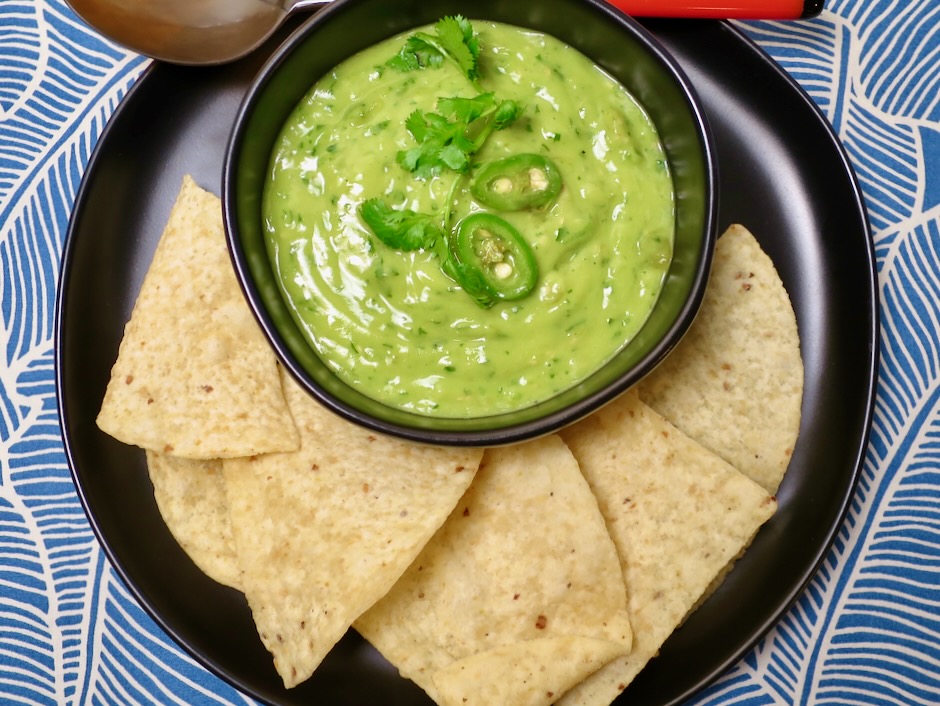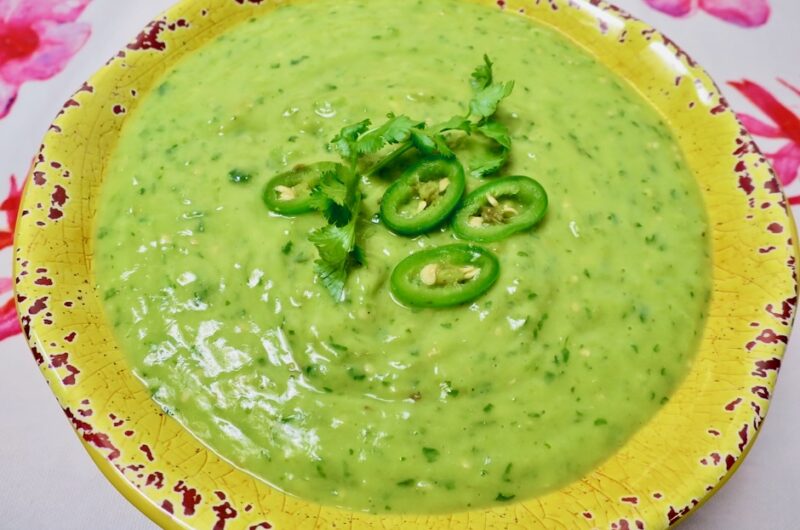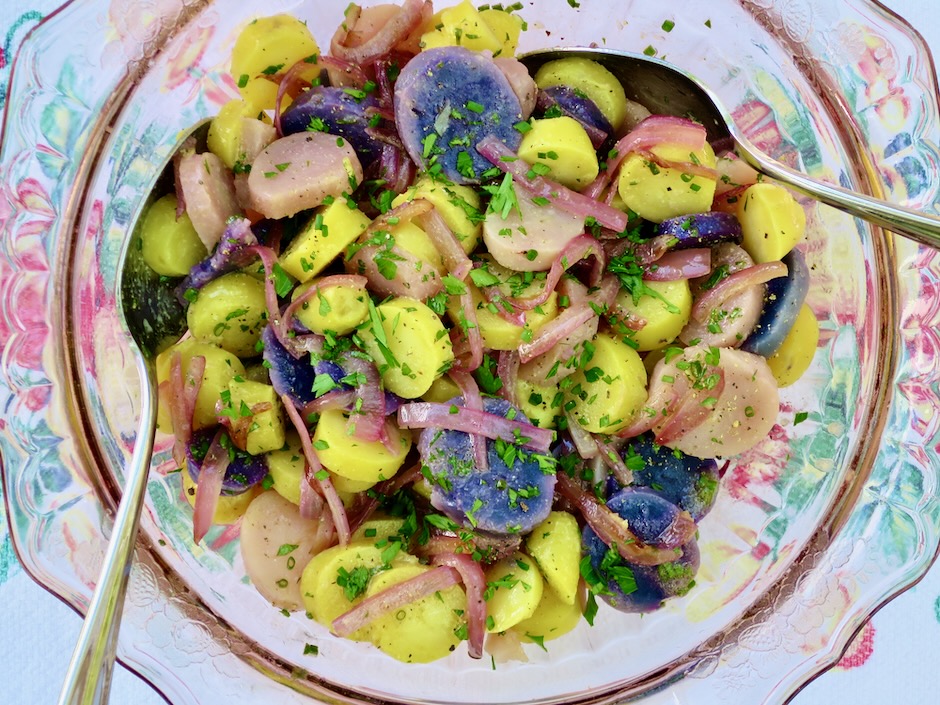
I remember not long ago markets featured only four types of potatoes; russets, white, red, and yellow. Today there are many more varieties to choose from. One of my favorites is fingerlings. They have a firm yet creamy texture which makes them perfect for this potato salad. The array of colors add a visual beauty to this dish.
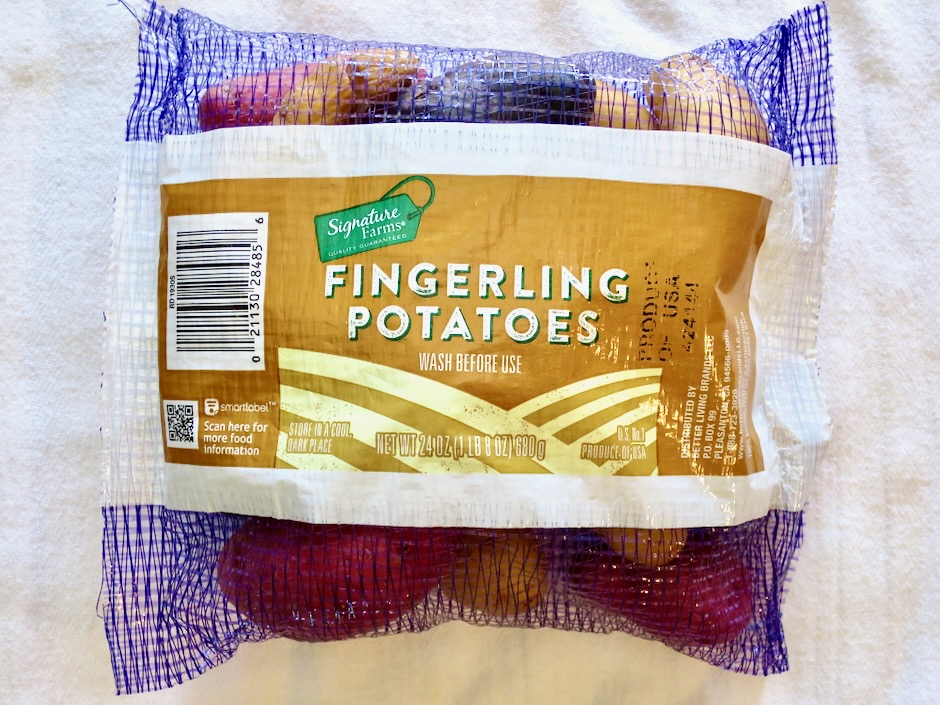
Fingerlings come in many shapes and sizes so when purchasing them (I found them at Safeway) look for the bag with the most uniform sized potatoes. This makes for even cooking.
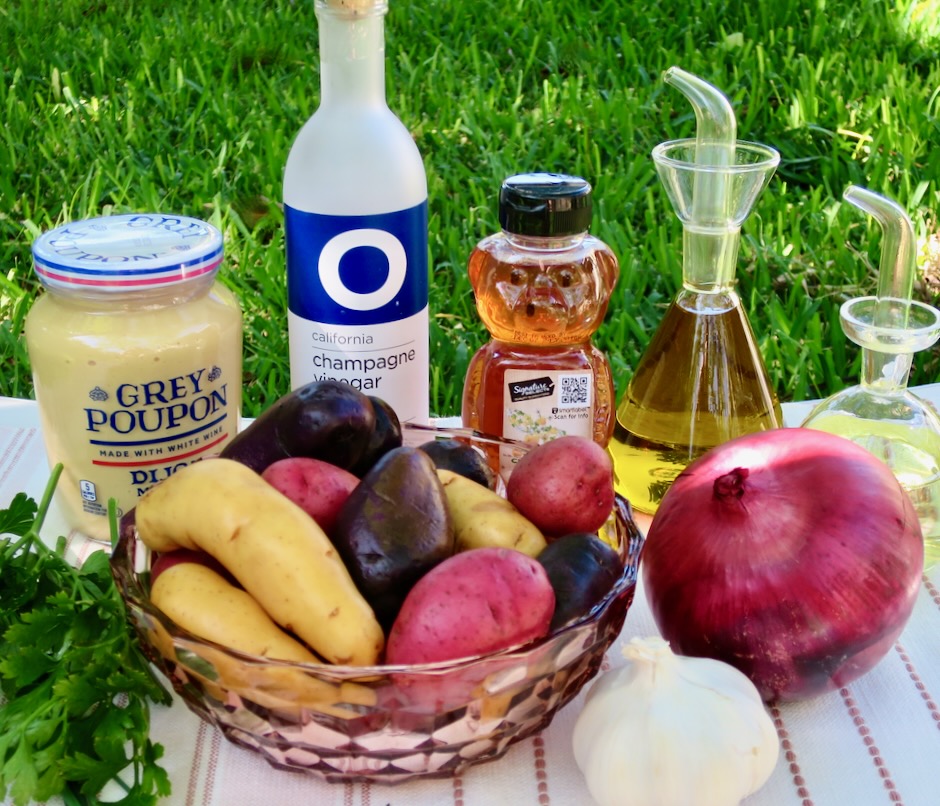
Many of us have multiple types of vinegars in our pantry. Each has its own use in different recipes. The one I reach for most often is champagne vinegar. Its flavor is crisp and light which makes it the ideal vinegar to use in dressings. Here on Maui you can find O Champagne Vinegar at Safeway and Whole Foods.
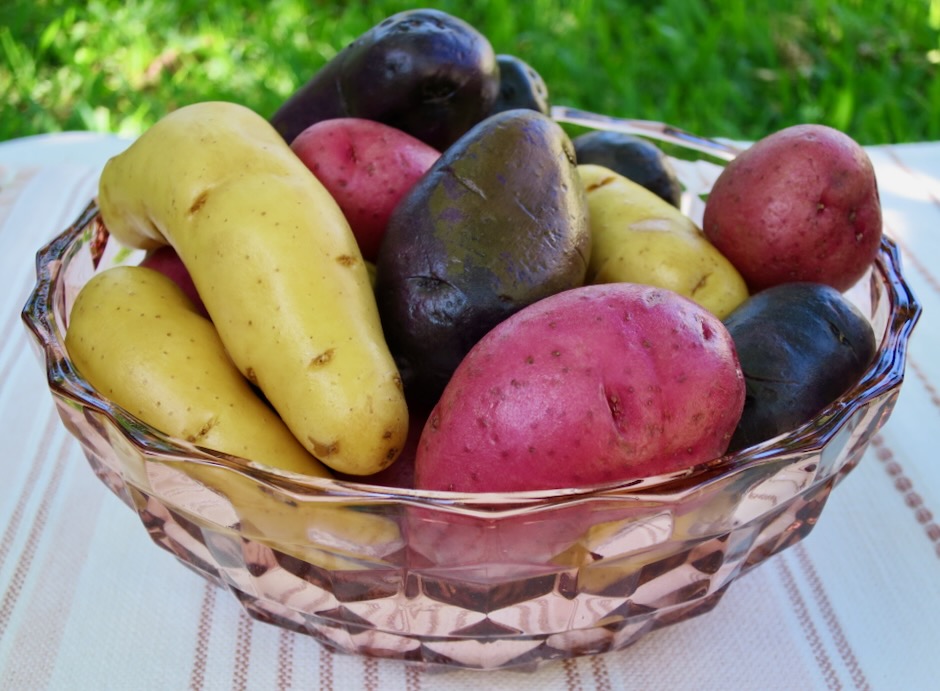
Though it is optional, peeling the potatoes once they are cooked makes for a gorgeous salad. The skins are thin and easily removed.
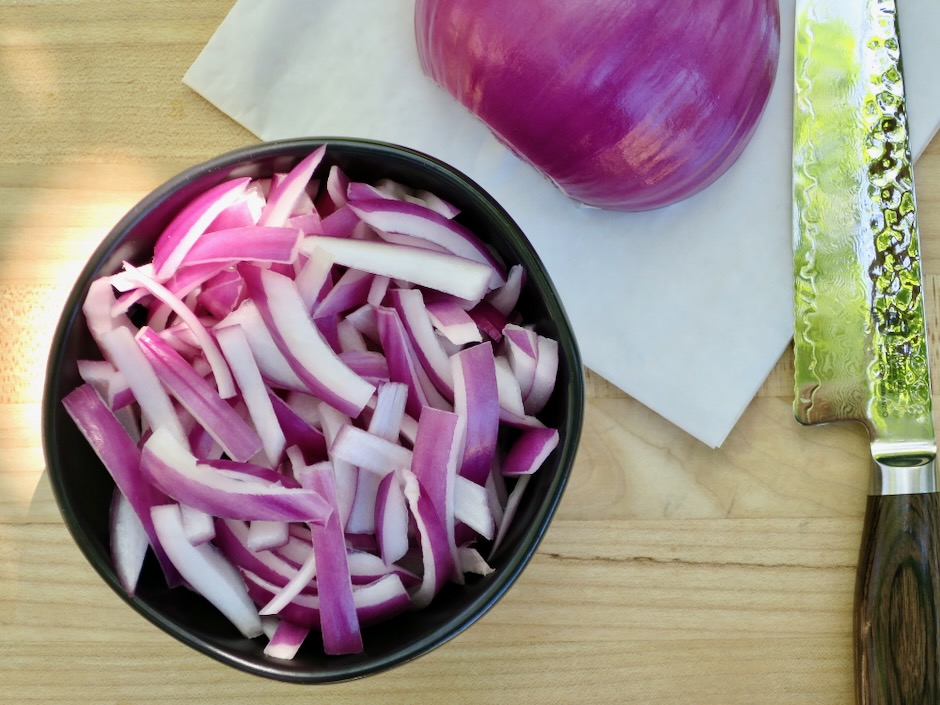
Gently sautéed red onions adds a subtle sweet flavor and color to the salad.
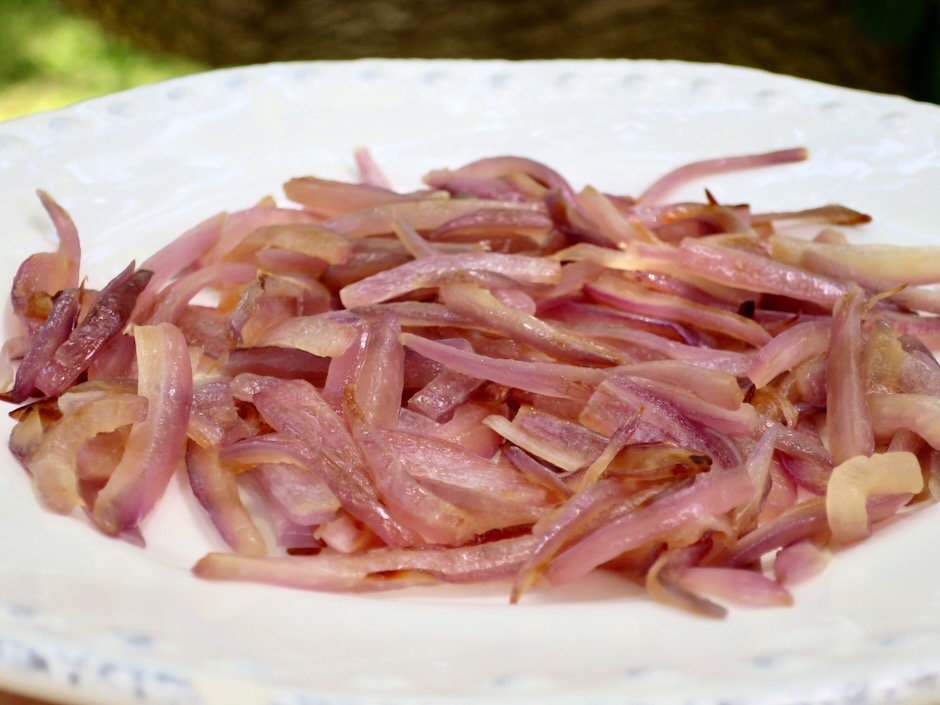
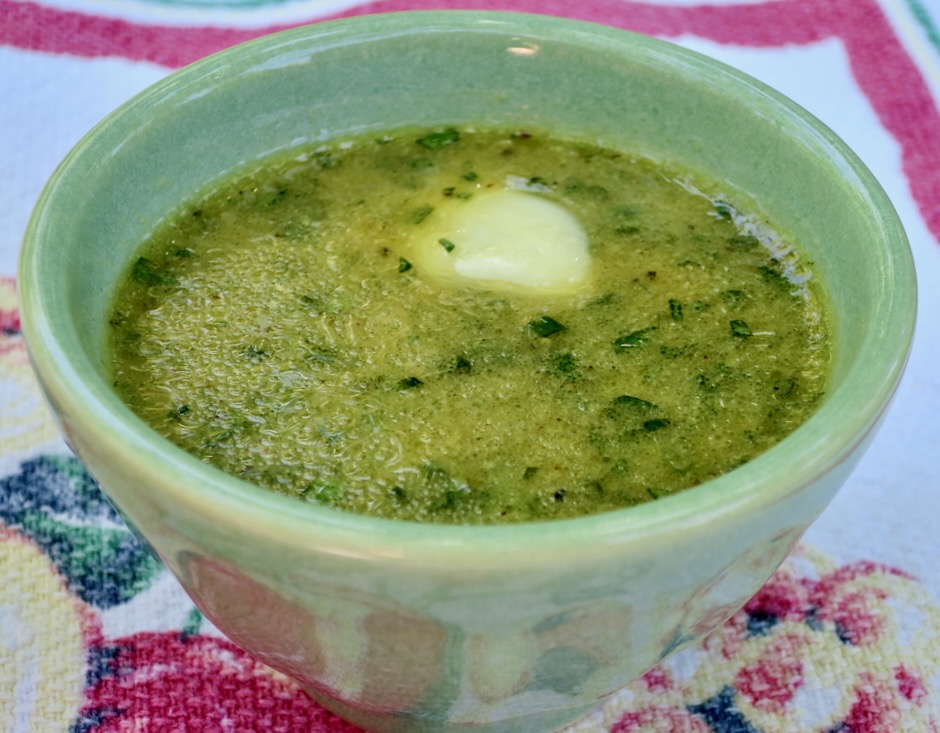
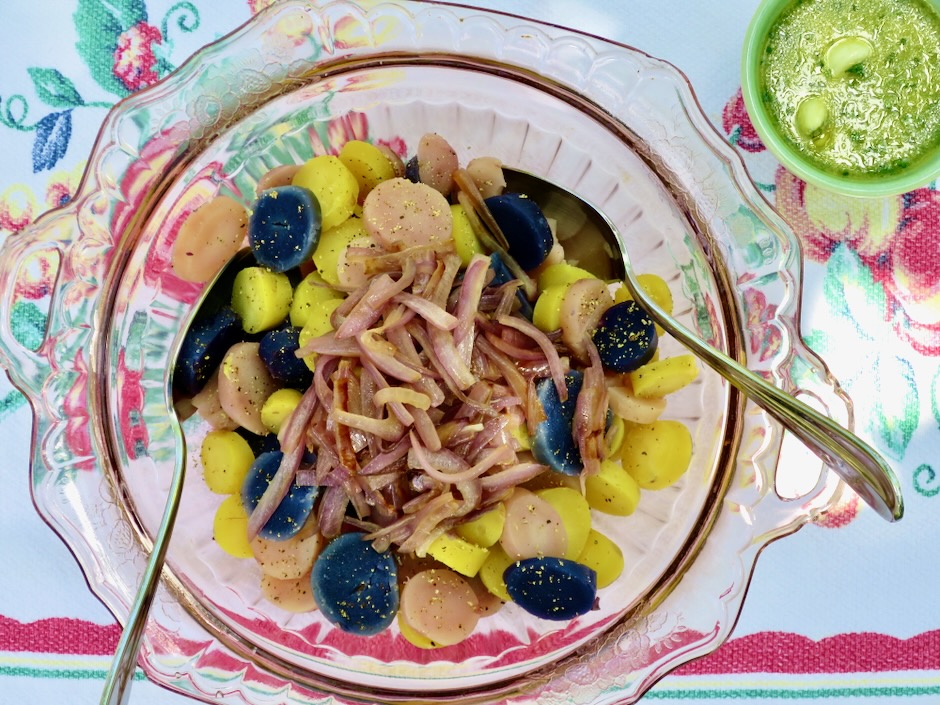
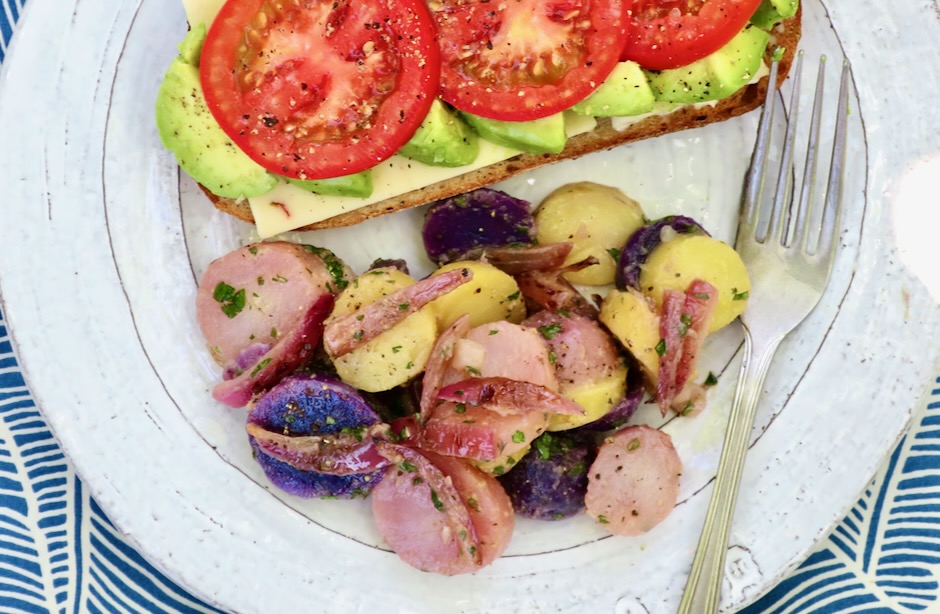
This potato salad is the perfect accompaniment to any type of sandwich, grilled chicken, pork, barbecue, tofu, or any other of your favorite summertime meals.
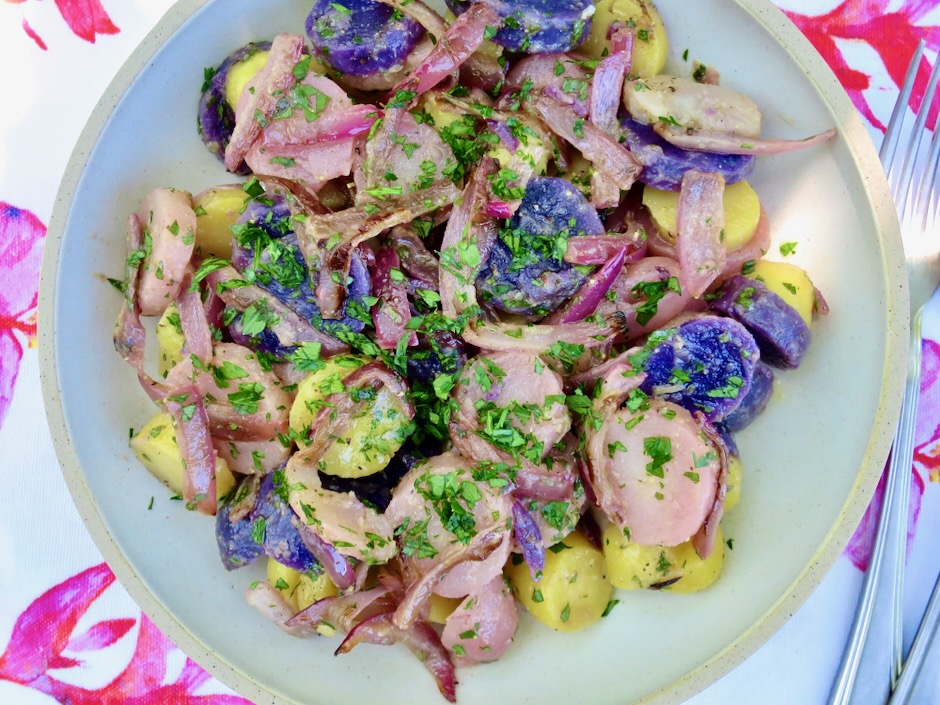
Ingredients
1 1/2pounds tri-colored fingerling potatoes (can substitute with mini yellow or red potatoes)
4 ounces red onion, sliced 1/3-inch wide
1 tablespoon + 1 teaspoon finely chopped flat leaf parsley
2 teaspoons chopped chives
2 teaspoons Dijon mustard
1 teaspoon honey
3 tablespoons champagne vinegar (or white wine vinegar)
3 tablespoons extra virgin olive oil
2 tablespoons canola or vegetable oil
1 medium garlic clove, crushed
kosher salt and pepper to taste
Directions
- Boil potatoes in a large pot of salted water for 10-15 minutes depending on size. Once cooked, remove to a plate to cool slightly. Peel potatoes once cool enough to handle (optional).
- Meanwhile, heat a medium pan with 1 teaspoon olive oil and sauté onion slices on medium-low for 5-7 minutes or until tender but not browned. Remove to a plate and set aside to cool.
- In a small bowl, whisk together the Dijon and honey. Whisk in the vinegar. Add olive oil and canola oil, whisking until emulsified. Stir in 1 tablespoon parsley and 2 teaspoons chives. Mix in 1/4 teaspoon kosher salt and freshly ground pepper.
- Slice potatoes into 1/3-inch rounds and place in a low wide bowl. Season with salt and pepper. Add onions and enough dressing to coat the potatoes well. Taste and adjust seasoning if needed. Sprinkle reserved 1 teaspoon parsley over the top. Serve right away or cover and chill in the refrigerator until ready to serve. Stir in spoonfuls of remaining dressing if the salad seems dry (potatoes will absorb dressing as it sits). Salad will keep for 3 days.

